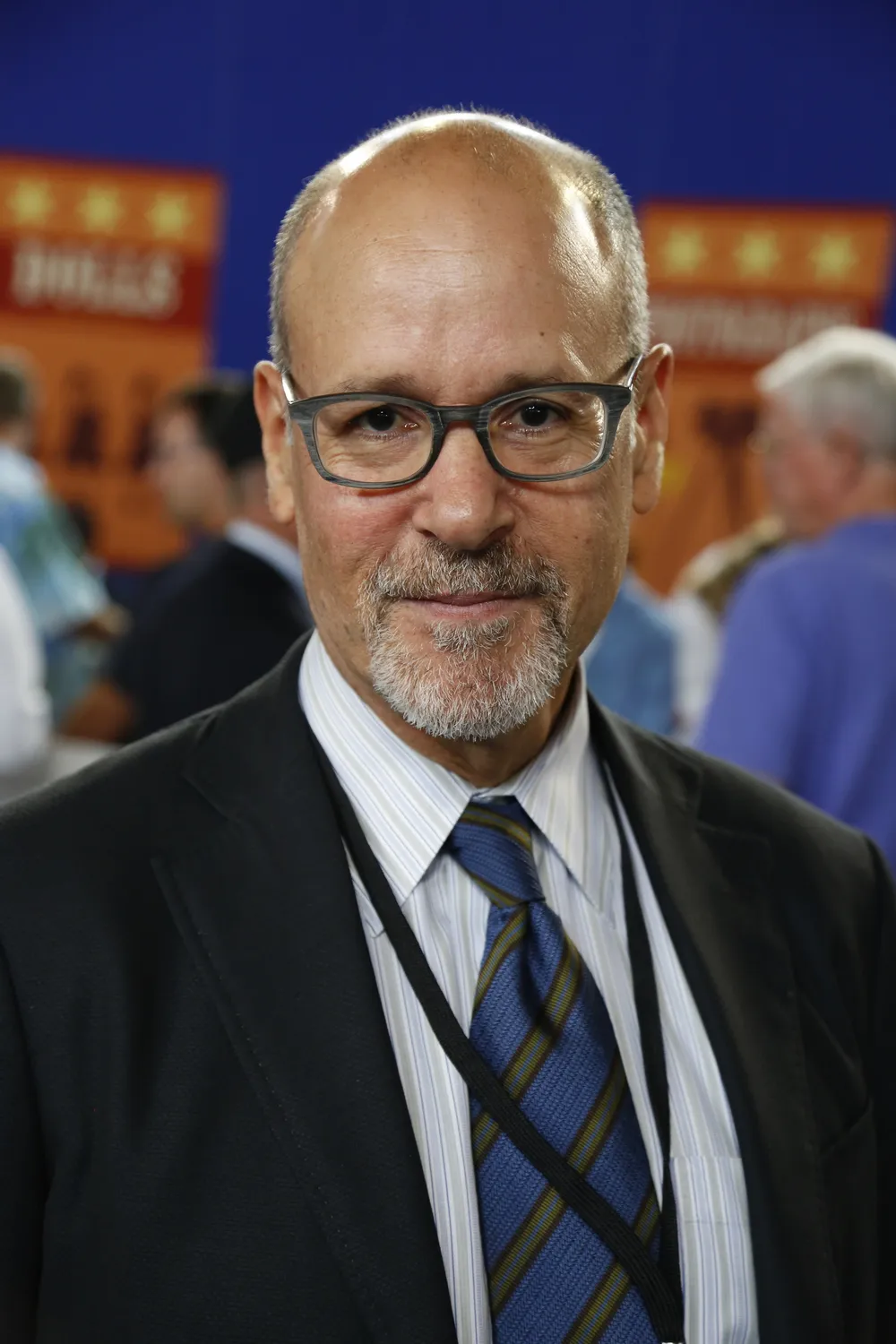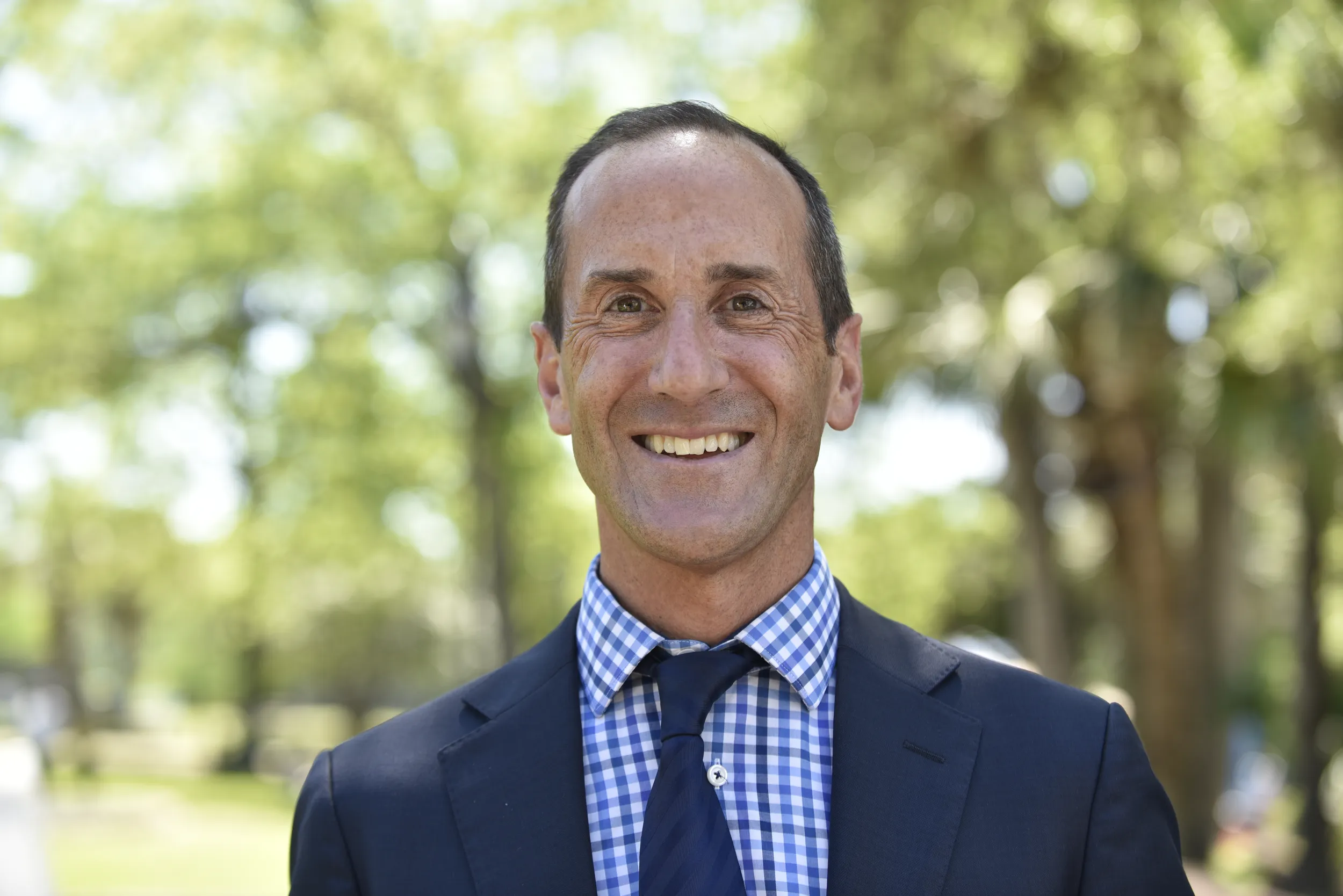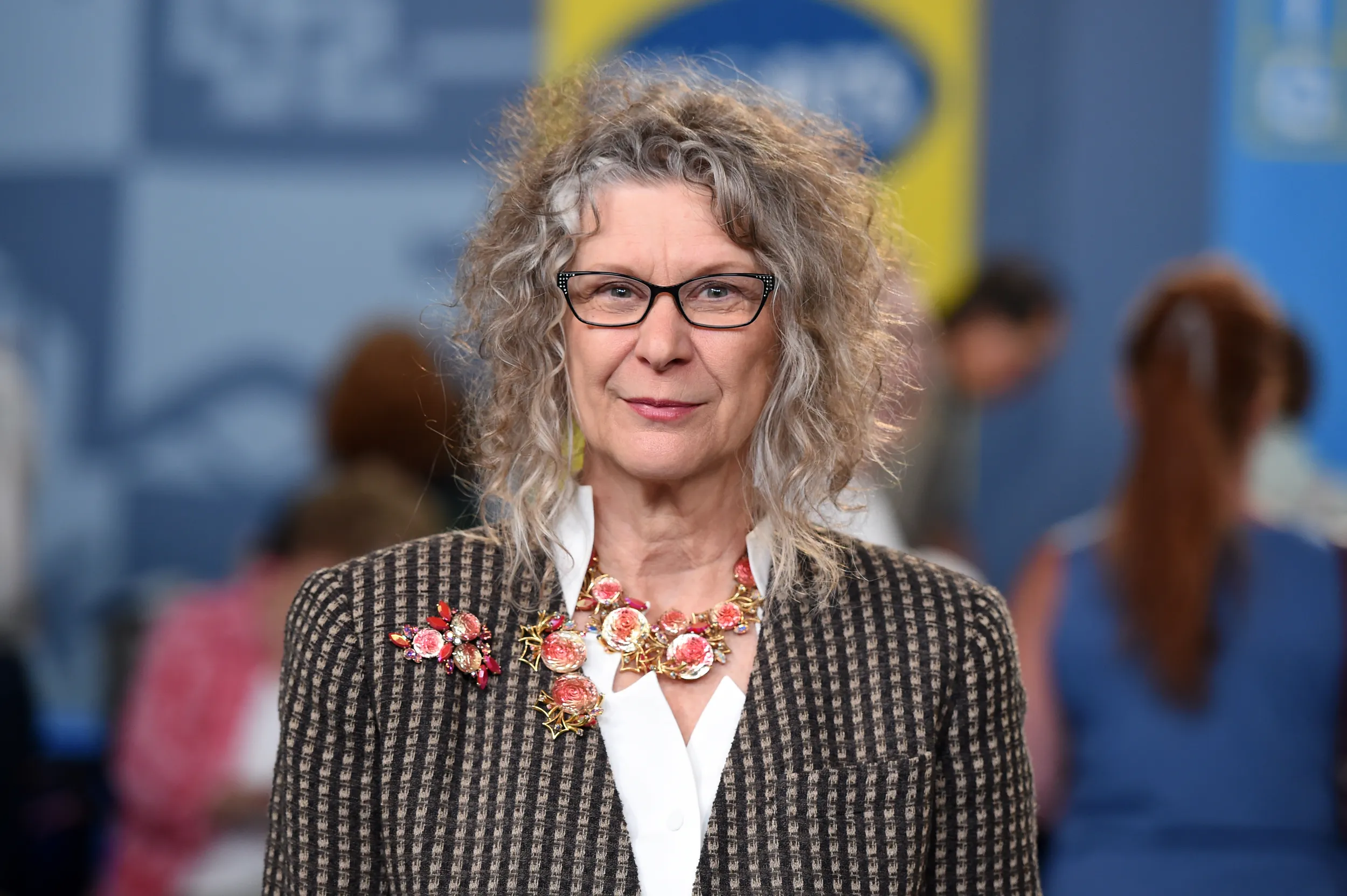Previous Episode
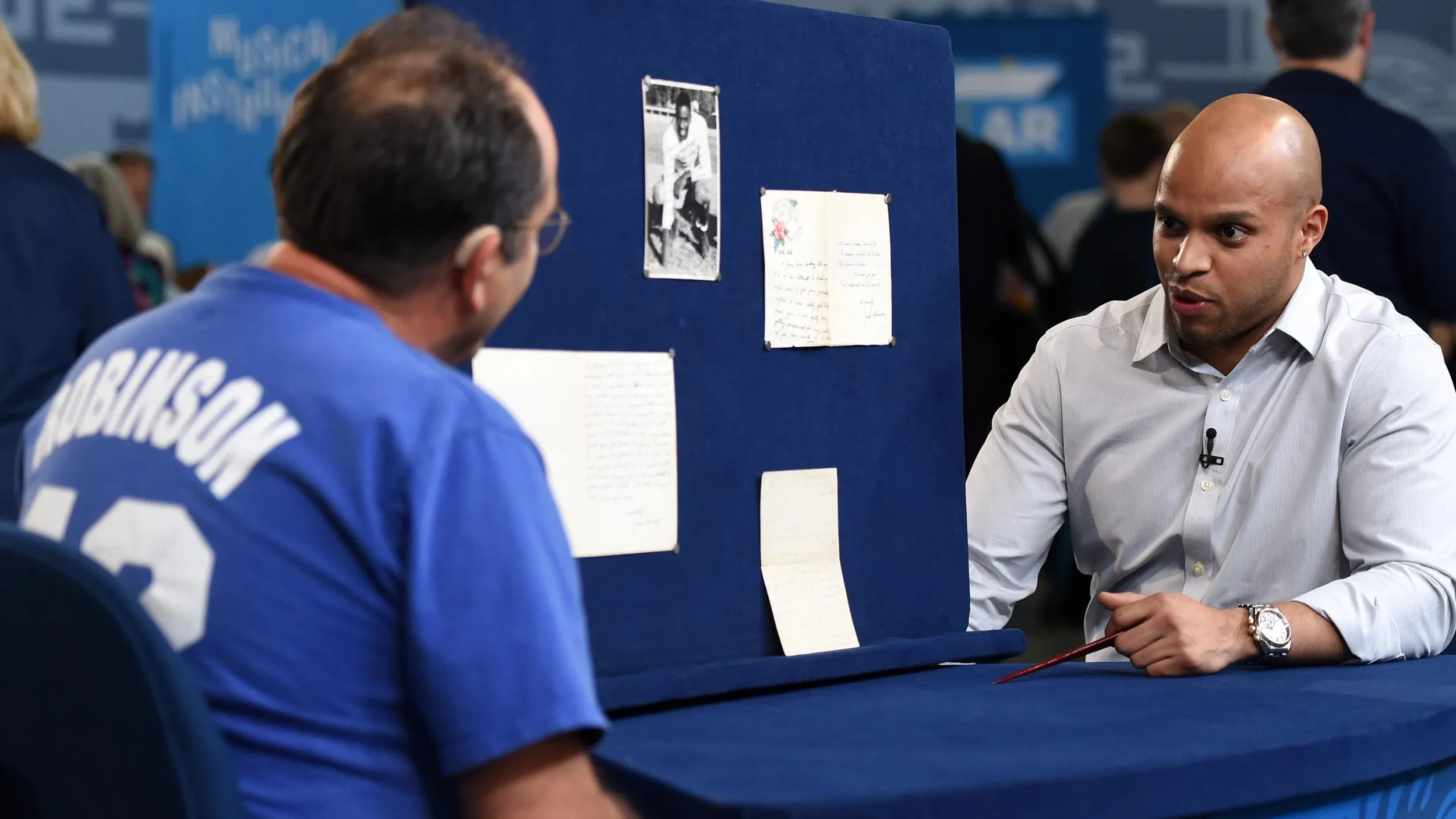
episode
Tucson, Hour 2 (2016)
A Jackie Robinson archive, a GMT Master Rolex, and diamond and onyx jewelry.
Next Episode

episode
Omaha, Hour 1 (2016)
A Grant Wood lithograph, a Daytona Model Rolex, and Prohibition liquor bottles.
A Pete Seeger song, a George Hitchcock diptych, and a Lincoln presidential pardon.
HOST: Antiques Roadshow captures the ups and the downs of Tucson's treasures right now.
APPRAISER: He actually trained to be a lawyer. Didn't work out, he quit to be a painter. Every parent's worst nightmare, right?
GUEST: (laughing): Wait, what? No way!
HOST: Antiques Roadshow's expectations for our visit to Tucson were sky high. Before the event, we got a chance to check out some incredible vintage planes at the Pima Air and Space Museum, one of the largest aviation museums in America. This place is dedicated to preserving more than 300 aircraft, like this North American T-6 Texan. What treasures needing some T.L.C. came into Roadshow in Tucson? We've got several to show you in this episode, so take a look.
GUEST: All I know about it is it belonged to an aunt of my mom who had no children, and so passed on her goodies to various nieces and nephews. She was a wealthy woman who traveled in Europe a great deal, she was married to a Canadian furrier, and she was glamorous. So then it came to me, and I've always been fascinated with it.
APPRAISER: And how long have you had the ring?
GUEST: Probably since the 1950s.
APPRAISER: So you think she probably acquired it sometime then or earlier?
GUEST: Oh, I think much earlier, I'm pretty sure.
APPRAISER: It's a really lovely, lovely example of what we call a heart ring, or a sweetheart ring, and it's a Georgian ring, so it comes from England. This piece dates anywhere from about 1840 to maybe 1850, 1855, thereabouts. And so it has this classic heart-shaped motif. Sometimes they're called lover's rings or betrothal rings, so it's like the hearts coming together. And it's not unusual to sometimes have the stones that are in the center here be the birthstones of the betrothal couple. But what's unusual about your particular item here is that instead of the birthstone, it has these two small carved cameos. One is carved opal and the other is carved hard stone. The interesting thing about this is that normally, we see portraitures or faces or sometimes the man in the moon as subject matter. This has a pair of monkey faces. (laughing) I have to say when I saw this, I was just blown away, only because not only was it so interesting, but it's so rare. It has this great bit of whimsy to it. It was obviously a custom piece for whomever it was made for. And if you turn the ring a little bit, we can also see that it's surrounded by emeralds and rubies, and the back of the piece too is quite extraordinary. It has this beautiful fluted background behind it as well, which is very typical of Georgian rings. This is incredibly rare. I have never seen one like this. My other fellow appraisers have never seen one like this either, and we all agreed it's sort of the bee's knees in terms of...
GUEST: Or the monkey's uncles.
APPRAISER: Exactly-- the monkey's uncle. So in terms of what we figure as a replacement value, if you went into a very good estate jewelry shop that had a piece like this, you could expect to pay close to $20,000 for this. I know.
GUEST: This is remarkable. Heavens!
APPRAISER: This is one of the most interesting pieces I've seen on the Roadshow in a long time. Enjoy, it's absolutely phenomenal.
GUEST: Thank you!
APPRAISER: It's monkey time!
GUEST: I'm a little verklempt. (laughing)
APPRAISER: You're a little verklempt. I would be too if they were mine, yeah.
GUEST: It's quite a surprise. I'll never wear it again!
APPRAISER: Just be more careful when you wear it, that's all.
GUEST: My mother's father worked in New York, and he bought it there and brought it back about... this is the turn of the century. And she had it in her place for about 50 years, I guess. Then I finally got it in my place, when my mother passed away, and we just love it. We use it as a decorative piece in the house.
APPRAISER: And do you know the country of origin or age?
GUEST: I was just told by her. She said Chinese. I was told this was a fish bowl.
APPRAISER: It is a fish bowl, and it was likely made as a pair in China about 1840 to 1860. Now, it's likely this would have been produced out of Canton, a region in China, and they predominantly made export ware-- items that could easily be put on a ship, as they were a port city, and sent abroad. And these were produced as fish bowls, but also as decorative objects, and these were made both for the booming middle class or merchant class in China at the time, and for export. This is the very, very finest example of export ware, mass-produced ware for export out of China during the 19th century. The detail of enamel on porcelain is very, very high. The gilt work to the cartouche is very, very fine. As we see here, there's good detailed work to the hair. The red lips and nose are well outlined. They're just very delicately and very finely executed. As we get into rose medallion ware and other export ware done during the 19th century, it gets very sloppy, we get simple outlines of faces, the in-coloring is insufficient or nonexistent, so this is very, very nicely enameled. The cartouches, the figural cartouches, are against a ground of foliate bands, and as we turn, we see these wonderful molded mythical beast simulated ring handles.
GUEST: Mmm.
APPRAISER: And as we look at those, we start to see the form, and it almost takes the form of a bronze censer. There's an interpretation of archaic or earlier bronze forms in the fish bowl form. The value at auction for a single fish bowl mid-19th century of this quality would be around $6,000 to $9,000. $6,000 to $9,000, okay. For insurance purposes, probably around $15,000.
GUEST: Mmm, all right. That's nice.
APPRAISER: A wonderful object.
GUEST: Thank you.
VOLUNTEER: Sports, okay, come right on up! Let's see what you got.
GUEST: It has a signature on it there. Michael Jordan signature.
APPRAISER: At auction, I'd guess $750 to $1,000.
GUEST: Million-dollar item right here!
APPRAISER: Very nice chair, 20th century, probably around about 1940s, probably part of a dining room set originally. Retail would be about $300.
GUEST: Thank you very much!
APPRAISER: You're welcome. Thanks for coming in.
GUEST: I have brought an original artwork by Ruby the Elephant, who was the painting pachyderm. She resided at the Phoenix Zoo in Phoenix, Arizona, for over 25 years until her death in 1998. This piece I got in an auction. I actually did a book bid in 1991, and it was done for a fundraiser for Arizona State University School of Art.
APPRAISER: It's a very fun piece of pachyderm art, as you said. This actually became a bit of a thing after Ruby started this. She's really one of the very first elephants to become famous for painting. It's usually painting on canvas, but you've brought us a ceramic charger here. And if I were to advise you on an insurance value, I would put an estimate of $1,500 on it.
GUEST: That's wonderful.
GUEST: I brought an Olympic gold medal that was given to Uncle Carl in 1936 at the Olympics in Berlin. They were the first U.S. basketball team to go to the Olympics, and they won a gold medal.
APPRAISER: Yes indeed, that was the first Olympics that they included basketball as a medal event, in 1936 in Berlin. And he played basketball previously?
GUEST: Yes, he played for Universal Pictures. I think the team was...
APPRAISER: Sponsored by Universal Pictures.
GUEST: ...sponsored by them.
APPRAISER: And he played for UCLA as well.
GUEST: Yes, he did play for UCLA.
APPRAISER: College basketball.
GUEST: Yes.
APPRAISER: And tell me what you remember of him talking about the trip.
GUEST: Uncle Carl didn't talk too much about the trip. Carl was a very quiet man. I either was told or I read that the final basketball game was played on clay, and that it was pouring down rain. And considering Carl's demeanor, I would suspect that was one of the reasons he didn't talk about the Olympics. He was very proud of his sport.
APPRAISER: That was one interesting part of that game was that it was a low-scoring affair. At 19 to 8, the USA defeated Canada in the gold medal game, and it was played in a heavy rain, which made for a real sloppy game. And I saw you brought the photograph here of them traveling on the steamship to Europe for the Olympic event, and they're in their uniforms. Where's your Uncle Carl in the picture?
GUEST: Uncle Carl is right here in the picture. He's the one that's looking away.
APPRAISER: And then that of course leads us to the gold medal here, which says "Berlin, 1936," and that's his awarded gold medal as part of the USA basketball team. We've had a lot of discussion on this today, mainly because we couldn't find any other examples that have come for sale from this team, being the first basketball team to win a gold medal.
GUEST: Oh, really?
APPRAISER: Based on the rarity. Our opinion at auction for the gold medal, we would expect it to sell for between $25,000 to $35,000 at auction.
GUEST: Oh, wow.
APPRAISER: And we would believe you could insure it for $50,000.
GUEST: Okay, okay.
GUEST: Well, this chest was given to me by my parents not as a blanket chest, but as a hope chest. They said, "Yes, it is a blanket chest, but this is what you're going to be using this for." We grew up in a house that was nicknamed the Museum House by my friends. My parents tried to get us into the antiques enthusiasm, and they gave us things periodically. This was one of the things that was given to me when I was young. I was told, at least-- you may be telling me something different.
APPRAISER: Okay, okay.
GUEST: But that it was from Pennsylvania, that it was a feather style that was done to it, and that it was a folk piece, but that's about all I know. It's been with me wherever I've gone, it's always held my most precious possessions, so to me, this is a really cool piece, and I treasure it.
APPRAISER: It is a blanket chest, and our consensus at the folk art table is that it's not actually from Pennsylvania.
GUEST: Oh, okay.
APPRAISER: But it's more likely from Shaftsbury, Vermont, where there was a famous furniture maker and decorator named Thomas Madison.
GUEST: Okay.
APPRAISER: And he had a group of followers who produced chests like this at a period of time in American history where many of the people who were living in New England could not afford expensive pieces of furniture, so they took plain pine furniture...
GUEST: And dressed them up.
APPRAISER: And dressed them up with this wonderful feathering kind of paint. So there's this group that is identified with Thomas Madison in Shaftsbury, Vermont, and that's where we think this piece was made.
GUEST: Oh, okay.
APPRAISER: Around 1825. And it's a very well-loved piece. It's had a long and treasured history, but it's got some condition issues, and the paint has gotten a little bit worn and a little bit dull.
GUEST: Right.
APPRAISER: So in terms of a value, that's going to have an impact. So at auction, we would suggest an estimate in the range of $5,000 to $10,000.
GUEST: (laughing): Wait, wait, wait what? No way! Yeah! You serious? Oh God, I sound like those people always on these shows. Really, $5,000 to $10,000?
APPRAISER: Yeah!
GUEST: Holy moly guacamole, wow! Yeah, so... I like it a little better now, this is really cool!
APPRAISER: Right, you'll love it even more.
GUEST: Yeah.
GUEST: My father used to go out to New York once a year, and he would visit the same art gallery on Fifth Avenue, from what I'm told, and every year, he'd bring back some pieces of art. But I think he bought this in the early to mid '50s. I think at the time, he paid $300 to $500, somewhere in there. My father passed away in 1988. In 1999, I came back to visit my mother. I was living in California at the time. And it was sitting off in the corner. I asked her if I could have it, and she said, "I'm not just gonna give it to you." I said, "I'll pay you for it," and she goes, "No." She gave it to me. But I wanted to pay her something for it, so I bought it off my mother for a few hundred dollars and I took it to California with me. Then I got called to do some work in Asia, and I was gonna be gone for a couple years, so I took it with me, and then I came back and then I got sent to Europe for a couple years, so I took it with me there, and then I brought it back to the States. And then my mother, when she got sick, I moved from California back to Tucson, and I'm back in the house that my father built and it's back up on the wall that it was on, where it was hanging when I was a little kid. So this has come full circle. And do you know what you've got here? I know it's a Picasso. I've tried to look it up. From what I've been able to read, it's in his cubism period from 1909 to 1912, I think, I don't know, and that's really all I know.
APPRAISER: It's actually a very scarce Picasso print. It dates from 1909 and it's a drypoint. He made it by scratching design with a needle directly into a copper plate to gouge out the lines to make the design, inking them and then putting the paper over it and running it through a press. So it's a very direct way of printmaking, a lot less complicated than making an etching, for instance. And you're absolutely right, it's a cubist print, but just on the verge of him going into sort of high analytical cubism, what we know of Picasso and Braque, and their cubism around 1910, 1911. This just predates it, it's just on the cusp of that sort of major surge that made him such a famous artist.
GUEST: Oh.
APPRAISER: He made this in his late '20s. He'd moved to Paris in the early 1900s and was known, but it wasn't until 1907 that he even had major gallery representation, so he was still, you know, what we know of Picasso now, he was still becoming a discovered artist then.
GUEST: Wow.
APPRAISER: So he created this print in 1909, only made some proof impressions of it then, and it wasn't until 1912 that his gallery, his dealer in Paris, decided to put out an edition of this print. So it wasn't... not exactly he wasn't well-known enough in 1909, but he wasn't issuing prints in editions then.
GUEST: Okay.
APPRAISER: It took the gallery to do that three years later.
GUEST: Wow.
APPRAISER: And it was issued in an edition of 100 impressions, each of which is signed in pencil. Might look unusual to people to see a signature like that, but that's how he signed his early works. Not a lot of these survived. They're very scarce images, as I was saying earlier, and not many come on the market. The one thing that stands out with this, looking at it, is that there are some glaring condition issues. You said it hung on the wall of your parents' home in Tucson, so it probably got a lot of sunlight.
GUEST: Yes.
APPRAISER: And then you had it rematted, and I bet the old mat went up to this point here. Yes. All that darkness is staining that occurs from too much exposure to sunlight. It can be reversed, but it's detrimental. There's also some spotting here that looks like it's superficial and can also be washed, and all of that is kind of marring the signature, the darkness. The signature would come out better, the image. What this needs is a little bit of work.
GUEST: Okay.
APPRAISER: If it were to sell in this condition, I would see a retail price for it around only $10,000 to $15,000. That being said, if you take it to a proper paper conservator, put several hundred dollars' worth of cleaning into it to pull that staining out, you'd be looking at retail a $40,000 print by Picasso.
GUEST: (laughs) Wow.
APPRAISER: What'd you bring today?
GUES: This unusual piece. Judaica.
APPRAISER: Many times, a sculptor might make a work in bronze and then also make an edition in this spelter white metal because it was cheaper to produce.
GUEST: It's a family piece. Great-grandmother on the mother's side.
APPRAISER: Visually, it's stunning. It's one of the finest enameled watches we've seen in many, many shows.
GUEST: Good.
APPRAISER: It's got natural pearls, rose-cut diamonds in platinum, and then guillochè enamel. The case was made by one of the most famous jewelers, Verger Frères, a French jeweler who was considered the jeweler to the jewelers. And it is a miniature watch, it's an anonymous Swiss-made mechanism inside, but again, first quality, as you would expect. A wonderful piece, circa date about 1910. The neck chain is slightly later, was produced probably in 1930. Conservatively, I would put an auction estimate of $8,000 to $10,000 on the watch.
GUEST: Wow, cool.
APPRAISER: Very lovely piece.
GUEST: Excellent. Thank you!
GUEST: It was given to me as a gift. I saw it in a home for an individual that had passed away, and people that were caring for him had this on the wall, and I just commented that it was a nice picture. They said that if I liked it, I could have it, and I took it with me. And it'd been in my house, and I didn't know anything about it. I noticed there was a signature on it.
APPRAISER: Yes, in fact there is a signature. It's Ansel Adams' signature. Ansel Adams is the world's most renowned photographer. He spent most of his time in Yosemite Valley. This is a photograph of "The Monolith Face of Half Dome and the Merced River." This photograph was taken in 1938.
GUEST: Okay.
APPRASIER: The print itself was probably made in the late '60s to the mid '70s. At the time this was acquired, it was probably purchased for $25.
GUEST: Really?
APPRAISER: And Ansel's wife's family owns the gift shop in Yosemite Valley where this was acquired.
GUEST: Really?
APPRAISER: He established a museum here at the University of Arizona called the Center for Creative Photography, and it's now the repository of archives of the greatest photographers who ever worked in the medium, all their negatives, their papers. All of Ansel Adams' negatives are housed in Tucson at the Center for Creative Photography. A photograph in this format, it's eight-by-ten inches, was done as a special edition print for... ...sale in Yosemite Valley to people who visited. What makes this print special is that it has his signature. Most of these prints were done by assistants and they were not typically signed by Ansel Adams. So while this is a fairly common occurrence insofar as it was sold through the gift shop, it's very uncommon to have a signature. In a gallery, a retail price for this photograph would be between $4,000 and $6,000.
GUEST: (laughs) That's amazing. I had no idea that it would've been...
APPRAISER: So your good deed in befriending these people has rewarded you very nicely.
GUEST: That's wonderful.
GUEST: My grandmother's grandfather was a topographical engineer for the U.S. Army, and he was also friends with Abraham Lincoln.
APPRAISER: Really?
GUEST: And his children played with Abraham Lincoln's children. He was a general in the Union Army and was killed at Chancellorsville, and Abraham Lincoln came to his funeral as a friend. This ended up in my grandmother's estate.
APPRIASER: That's absolutely remarkable. So how would it have come into your ancestor's possession in the first place?
GUEST: I wish I could tell you that.
APPRIASER: A mystery.
GUEST: It is a mystery.
APPRAISER: It's a pardon to get a man out of prison.
GUEST: Correct.
APPRAISER: Was the prisoner a relative of yours?
GUEST: Uh, no, he was not.
APPRAISER: Who was he?
GUEST: That I do not know.
APPRAISER: So it starts out, this is all in secretarial hand, of course. Abraham Lincoln, it's an 1861 presidential pardon of a prisoner, Charles de Villier, for good behavior and the fact that he had never committed an offense previously. President Lincoln granted him a pardon. He was sentenced originally to 18 months in prison and served six months of that prison sentence before President Lincoln pardoned him. I'd like to turn the document over so we can continue and see the rest of it.
GUEST: Certainly.
APPRAISER: Of course, it's almost easier to see the presidential seal from the back side here that's blotted all over it. The pardon continues down on the second page of the document, and then again, as I already said, the entire document is written in a secretarial hand, but here is the authentic hand-signed signature of President Abraham Lincoln, and then the Secretary of State witnessing the presidential pardon. It's just a living, breathing piece of our American history. I believe that your signed Abraham Lincoln presidential pardon document would be, at retail, worth between $12,000 to $15,000.
GUEST: Wow, that's great! That's exciting.
GUEST: I inherited it from my grandfather. He was an antique gun collector. He has quite a few guns in his collection. I got them when he died about 11 years ago, miss him every day. This is the one I've done research on, and I've always had a feeling about it, and no one's really taken me seriously until now. I do believe it is a Custer gun. I can trace it back to the ranch where it was found. We can trace it to where it was part of Sergeant Benteen's numbers.
APPRAISER: When did he first acquire it, about what timeframe?
GUEST: It was probably about the 1950s. He was working at Salt River Project, and there's a coworker of his who found out he liked antique guns, he was like, "Well, I got this gun from a guy in California who used to be a rancher in Montana," and he says, "Yeah, it was probably a Custer gun." So my grandfather did a little bit of research. There wasn't too much back then. Now there's more information on it. And what I found, it's within the numbers of the Custer guns that were issued.
APPRAISER: So you know it's a Colt single-action Army revolver.
GUEST: Yes.
APPRAISER: And they started production in around 1873, and the production continued up until the Second World War, and they made a total of about 350,000 revolvers. But in that period from 1873 to the Battle of Little Big Horn in July of 1876, a number of these single-actions were purchased by the U.S. government and shipped to the Seventh Cavalry. This single-action is within the 5,000 serial range. So, many of the guns that are between 4,500 and just around 7,500 are considered in those batches that were shipped to the Seventh Cavalry.
GUEST: Okay.
APPRAISER: So they have the potential of being a Custer gun.
GUEST: Yes. And the trick is trying to prove that it's a Custer gun.
APPRAISER: Correct, that's the hard part. And you have to try to work with the scant records that there are and the research, and most of this comes down to ranges of guns, but this is clearly in the Custer range.
GUEST: Okay.
APPRAISER: It has certain features of early single-actions which are desirable, like on the top, there’s a slanted barrel address, there's the round sort of doughnut or bull's-eye ejector rod, and these are all solid features of those early production guns. But that said, turn it on its side here, and we can see the serial numbers here. It's "5918," and the number here and a little "A." The "A" stands for O.W. Ainsworth, who was an inspector of those early batches that went to the Seventh Cavalry, and here on the front, we can see the cartouche of O.W. Ainsworth. The issue that I have with it is that the varnish is worn off of it, and so the cartouche is still very strong, and so I think it's been refreshed. And in addition, the back strap here is in my opinion clearly a replacement, and the serial number has been restamped, and the hammer is also restamped.
GUEST: Okay.
APPRAISER: And here, the cylinders were also stamped with the serial number, and here we have the remnants of what appears to be a seven and a nine, which doesn't match the serial numbers on the rest of the gun. So the cylinder at some point was replaced.
GUEST: Okay.
APPRAISER: So have you given consideration to what the value is for this?
GUEST: I was guesstimating around $5,000.
APPRAISER: Well, you're spot on.
GUEST: Okay.
APPRAISER: I would estimate at auction, even with its problems, that it would fetch somewhere around $5,000 to $8,000.
GUEST: Oh wow, okay.
APPRAISER: That's pretty good, again, because you almost have half a gun there. If you had more parts that were original to the gun, I would estimate that it would probably fetch somewhere between $20,000 to $40,000 at auction.
GUEST: Wow, okay.
APPRAISER: And of course, you've given some thought to what it'd be worth if you could prove that it was at the Battle of Little Big Horn.
GUEST: Yeah, I've heard they'll test the inside with a bullet that was found there, and that could be worth a million.
APPRAISER: Yeah, well, I would say probably at least a quarter of a million dollars or upwards.
GUEST: I like it.
GUEST: It's Fred. In a Navajo, the work was continuous like this.
APPRAISER: So it's one piece, so you won't see this like that, so you know right away this is a Hispanic weaving. I think these are gonna increase in value, 'cause it does have kind of a folk art quality.
GUEST: I didn't pay very much, I think about $150.
GUEST: My uncle worked for Arthur Wirtz, who owned the team in the '60s and '70s.
APPRAISER: And it was gifted?
GUEST: Yes, it was Stan Mikita's hockey stick. It has his name and then his number on the other side, and it was the '74-'75 Blackhawks.
APPRAISER: Okay, now they weren't very good that year.
GUEST: Correct.
APPRAISER: But the Chicago Blackhawks these days are a very popular team. One of their prominent players is Hall-of-Famer Stan Mikita, and here you have a Stan Mikita game-used and signed hockey stick, and Stan Mikita, as you know, invented the curvature on the heads of the hockey sticks. The story goes that he and fellow Hall-of-Famer Robbie Hall were practicing, his stick broke, he was very upset. Hit a shot and couldn't believe the velocity...
GUEST: Like whoa!
APPRAISER: Exactly, we have the '74-'75 hockey team, the Blackhawks, all of their signatures on the stick. Most prominently, we see Stan Mikita's signature, at center. At auction, I would estimate the stick to go for about $2,000 to $3,000.
GUEST: No! $2,000? Ha! I absolutely never... that's mind-blowing.
GUEST: I inherited them from a woman who got them at an estate sale in Green Valley, which is a little town south of Tucson. And the story goes that they belonged to a granddaughter of President Tyler.
APPRAISER: I see...
GUEST: And they were in her estate. This woman bought a whole bunch of stuff at this estate sale and this was one of the pieces.
APPRAISER: Here's the deal. I suspect these spurs were made in California. They have all the hallmarks of a California spur in terms of the style and the way they look. It's possible these spurs were made by a man named Abbie Hunt, who worked in California for years. It would take some research to nail that down. What's really unique about these are these little horse head buttons, which are fantastic.
GUEST: I love those, I love those.
Now, these spurs are handforged iron, with inlay silver here and on the off side, with repoussé silver that's been attached that's also been hand engraved. The rowels, you have inlays and little file decorations. You see these little lines here?
GUEST: Oh yeah, yeah, I didn't see those.
APPRAISER: And then the buttons have been pinned with copper pins, and you see that on some of Hunt's spurs.
GUEST: Why would you put such horrible rowels on them?
APPRAISER: Okay, they're not horrible rowels. Here's the deal. A horse, especially in the California style which comes out of Mexico, was called a trigger-reined horse. They were trained for seven years. These were top-quality horses. The horse was not moved with the spur. The spur was just a cue, and you wanted an extension of the heel so your heel went back and you could just slightly move your heel and nudge that horse to turn his flanks around. You were riding with your hips and your seat and your legs. You would hold the rein fixed. As a matter of fact, the best trained horsemen would tie a silk thread to their reins and hold it that way so they weren't in the horse's mouth all the time. You wanted to stay out of their mouth and you were hip riding or seat riding the horse. The horse could feel every move you made, and so you weren't kicking the horse.
GUEST: You weren't really hurting it with those.
APPRAISER: Just nudging them. You might take some very fine sewing machine oil and rub it all over the iron, and it'll clean it up, it'll back the rust off. And they'll look even more beautiful than they look right now.
GUEST: Okay.
APPRAISER: As very generic California spurs, which were made some time between 1890 and probably about 1920 at the very latest, they're worth $1,200 to $1,500, so a good amount.
GUEST: Sounds good.
APPRAISER: If some research could be done on the spurs, and nail down who made it, whether it be Hunt or somebody else, then you'd more than double that price. The filing and the engraving is top notch.
GUEST: Nice!
APPRAISER: They're very beautiful spurs.
GUEST: They are, thank you!
GUEST: During the '80s and the '90s, I was a journalist living in Salt Lake City and concurrently, I had started a non-profit organization that taught tree planting and tree stewardship, tree aftercare, in urbanized areas. So I ended up working all around the state. It was called Tree Utah. At the same time, our daughter was dancing with a University of Utah affiliated organization for children, and Pete Seeger was coming to town. I wrote, requesting that he would write a song for the purpose of tree planting. A couple of months later, when he came to town, I received a phone call saying, "Could you go and pick up Pete? He’s staying up at the Alta Lodge," and I was so excited, you know, I went up first thing in the morning. Pete came to the door and said, "Oh, Pepper, nice to meet you, I've got something for you." And he said, "I read your letter, and last night, 3:00 or 4:00 in the morning,” evidently he was moved sufficiently to... to wake up and write this song.
APPRAISER: Did anyone ever perform the song?
GUEST: Pete did. The day that I picked him up in the morning, we spent the day at our friend's house and had dinner there. After dinner, he took out his guitar and played the song for us.
APPRAISER: He actually wrote this bit on the back of your letter. We can kind of see the letterhead through it for your tree organization, and I think what I found really special about this is the fact that, one, this shows how inspired he was, and his process was so fast. He was such a prolific songwriter that he somehow, you can tell, he literally just had the idea completely conceived in his mind and then just sat down and wrote the song, and he not only did that, over here he gives you suggestions. "I suggest two people in unison sing the first verse, subsequent verses." So he was giving you exactly how to voice it, how to perform it, and then on top of all of that, he here says, "Dear Pepper, I'm giving you copyright." So he actually gifted the copyright and said he was going to send a copy of this to his publishing company and that you have the right to publish this and use it to the benefit of your tree organization, at will, which is extraordinarily generous.
GUEST: Pretty special, huh?
APPRAISER: Yeah, and I think the reason that that spoke to me is that he just passed away in January of 2014, at the age of 94, and I think one of the things he's most associated with, apart from his actual folk music career, is his passion and drive for environmental issues and how active he was. He never stopped. Two weeks before he passed away, he was still trying to organize a march to honor Martin Luther King. He was doing things literally up until the moment that I think he was ready to leave the earth, and it's kind of a testament. Sadly, he didn't die a wealthy man. He had an amazing career.
GUEST: In terms of money you mean?
APPRAISER: In terms of money, and that's exactly where I'm coming from, but he was so generous, that look at what he created and how much he gave away of his creative spirit and his output to support the causes he believed in. He started the movement to clean up the Hudson River. We could be here all day if we listed every kind of environmental cause he got behind, but this is the kind of thing that would never be in the headlines. No one knew he did this. He did this because he cared about your cause and he wanted you to have this and he wanted to support it. So, all that to say, if we come around to the actual value of it, I mean, the value is really, truly priceless. His market has not really come around yet. It's the very, very infancy of it, but I do expect from here forward, as all of the artists he influenced-- Bruce Springsteen and so many again, too many to name-- start to appreciate his work. Currently at auction, they probably put somewhere around $800 to $1,200 on a piece like this. But, I think, hold on to it, because he's our last link to Woody Guthrie. When he was 21 he was performing with Woody Guthrie, and the Almanac Singers, so with him gone, it leaves this amazing legacy and who knows.
GUEST: Well, to me that's a whole 'nother kind of wealth.
GUEST: I've had this clock for about four years. I bought it from a friend of mine who was going to have a yard sale, and I took a look at the goods before he had the sale, and I bought it from him.
APPRAISER: And what did you pay for the clock?
GUEST: About a hundred bucks.
APPRAISER: And did you haggle with him on the $100?
GUEST: No, I knew it was well worth it.
APPRAISER: You knew it was well worth it? What did you like about the clock?
GUEST: Uh, just the wood, the pieces of wood, and how it went into the corner, actually.
APPRAISER: Yeah, it's unusual, it's a very interesting clock. It's something that I really haven't seen before, and it has a real "wow" factor, it's amazing. It's sort of a hybrid of a clock that was made probably to order. It's a combination of a tall clock dial here with this tombstone shaped dial and an English wall clock, that was made for the corner, to boot. This is signed here on this name plaque, "William Webster of London," and he worked in Exchange Alley. And now, there are two William Websters. There's the first William Webster that worked from 1710 to 1734, and then he had a son, William Webster II, that worked in the same location. Now, William Webster I was a journeyman to Thomas Tompion, which was London's most famous clockmaker, and anybody affiliated with Thomas Tompion is somebody of importance, really.
GUEST: Is it possible it was made by William Webster I?
APPRAISER: It could be, because this arch dial is something that comes into play right around 1730s. But more likely, I think it's mid-18th century, made by William Webster II. It's just an incredible clock made of burled walnut, and then it has these great features with this herringbone inlay that goes around the door and all these half-round moldings. And then it has this marquetry inlay down at the bottom, and then it's repeated on the chamfered edges. It has a wonderful broken arch top with these period brass, what we call ball-and-spike, finials. It has a great dial, it has a silver chaptering that's been applied, a strike silent feature, and these applied spandrels all the way around, which are of the period of mid-18th century. Also, the movement has what we call a five-posted movement, which is a very early feature. Most tall clock movements have four posts that hold the plates together. It has a few condition issues.
GUEST: Yes.
APPRAISER: Where you see these half-round moldings that are missing. There's a blind fret here on the side, that's missing. The cloth could be replaced.
GUEST: Okay.
APPRAISER: But really, not that big a deal. It's missing its hands. We could find hands that would be appropriate for it. In this present condition, I think it's worth $25,000.
GUEST: Oh my God.
APPRAISER: But I think if you were to research this a little bit more and prove that it was made by William Webster I, it could be between $30,000 and $35,000. Made by William Webster II, which I believe it to be, in a fully restored condition in a retail situation, we're talking around $30,000.
GUEST: That's great, I had no idea.
GUEST: Seventh gate, right there.
GUEST: Well, these pieces I made. Stone came from Mexico.
GUEST: This is the one that she wants. They're gonna end up finding out it's worth lots of money, and it'll be yours.
GUEST: I think it's white jade.
APPRAISER: It is white jade. It's a beautiful, highly translucent white jade. It's not the best color because it has certain cloudy areas that are kind of ivory toned in it, but it's still very, very attractive. It's super, super thin, very, very difficult to do. And it was probably made about 1890, 1900. And on the exterior of the bowl are four emblems, and they're all tied with ribbons. And the emblems are the emblems of the immortals, and there are eight immortals, so this is one of a pair. And it's just very, very delicately carved. A bowl like this, very conservatively at auction, would sell between $3,000 to $5,000.
GUEST: Good, that's good!
APPRAISER: What did you pay for it?
GUEST: A dollar! And actually, I didn't pay the dollar. My girlfriend and I, we do thrift stores, and we get gifts for each other, and it has to come from a thrift store, and this was a gift. So can I say thank you to Diane? That's great!
GUEST: I brought an old chair that was in my family for centuries.
APPRIASER: So what do you know about it?
GUEST: Well, I know it was in the... 'cause I remember it in the living room when I was a little kid.
APPRAISER: So that's this picture here of it out of an album you brought us. That's the chair there in front of what looks like a very nice Navajo weaving as well. That was taken when?
GUEST: Around 1910.
APPRAISER: Okay, so what do you know about the chair specifically? What's the family lore?
GUEST: Well, you know, I always wondered what this was. I never saw this top on anything. I did a lot of research. I never... I'm not familiar with this.
APPRAISER: You mean the top, the way the arms are flattened?
GUEST: The arms, yeah, I've seen later ones, but not this one. And I saw a similar one on the Roadshow once and it had this splat, but it was a corner chair.
APPRAISER: Okay, we think it's a chair made in the late 18th century on the Iberian peninsula. So Western Europe, southwestern Europe.
GUEST: Oh, really?
APPRAISER: It could be Spanish, it could be Portuguese, it could even be from another Mediterranean country. But it's a great example of European rococo furniture. We love especially the sort of subtlety of craftsmanship in the carving there at the front matched by this rococo splat. This was made in the country somewhere, probably not in the city. The economy of craftsmanship is great. This splat here, while it looks very refined on the front, is actually rather rough-hewn on the back, and I love that economy of craftsmanship. There's also a wonderful example of hand-tooling on the inside of this curved front seat rail, where you can see these lovely chisel marks that once again speaks to somebody who didn't care what the chair looked like on the inside, just cared what it looked like from the outside. That's a very sort of a country craftsman thing to do. It has a lot of hallmarks of rococo craftsmanship-- again, the pierced splat, these cabriole front legs ending in ball-and-claw feet.
GUEST: So they're not Chippendale?
APPRAISER: It's Chippendale in its style, and sort of done after the knowledge of Chippendale's furniture book, which was published in the mid 18th century. They have lost a little bit of height. You can see that the talons don't quite finish. I love the swoop of this arm here, I love the way that this is sort of stepped up and curved to the top. The cabinetmaker really had a great sense of what made a chair look good. It's a wonderfully constructed chair. This chair is made of mahogany or some other exotic hardwood. It could be rosewood. If it is rosewood, to sell it, you would need to have the appropriate export paperwork in order to sell it overseas. Rosewood is a wood that they control the sale of very closely. Based on the fact that it is an 18th-century chair with great craftsmanship, in an auction, we'd probably put a value at about $1,000 to $1,500.
GUEST: Really? Okay.
GUEST: They came to me by virtue of the fact that my wife passed away, and it came to me through the will. One of the Robertson family members, or maybe two, were friends of my mother-in-law, and they gave these two vases to my mother-in-law, and now I own them.
APPRAISER: They're both signed "Dedham" for Dedham Pottery. And what made Dedham famous was certainly not pieces like these. What made Dedham famous were the plates and the bowls that they made with crackled glazes and little bunnies. They made a lot of those. And those were made to make money so that Hugh Robertson, who was behind the helm, could work on making new glazes. That was all this was about. These are all about glazes. If you look at the shapes, the shapes are rather heavy. They're not very elegant. The pieces themselves are heavy. They're not very well thrown, and it's done quickly. It's all about how to make beautiful glazes. And Hugh Robertson came from a long line of Scottish potters, many generations, and he was always attracted to Asian ceramics and their glazes and wanted to come up with his own version of an oxblood glaze, sang de boeuf. In 1888, he finally came out with the fabulous red glaze that he was looking for. That sang de boeuf, or oxblood, ended up being called Robertson's Blood because he had really put everything he had in there. And he was also doing these gorgeous volcanic glazes, and he won a lot of prizes internationally for them. So he started making these glazes when he was at the Dedham Pottery in Massachusetts, and that would have been after 1896 and before 1908. And I will show the marks here, which are customary of these experimental glazes. You've got "Dedham," you have the "DP" mark here, and you've got "HCR," which is for Hugh C. Robertson. So both of these have that. As far as pricing goes, this one here has a chip which is not insignificant and is bigger inside than it is on the outside, but it is bigger and it's a more interesting form. I would probably put this, at auction, at $1,500 to $2,000.
GUEST: Mmm.
APPRAISER: And I would probably do $2,000 to $3,000 on this one.
GUEST: Very interesting. My mother-in-law will be very pleased to hear that her gift is worth quite that much.
GUEST: They were originally in a hotel that my grandfather owned, and the hotel got sold, and I think my aunt took them, his daughter. And they were in her house. I think the painting might have been just one painting, and I think my aunt could have had a lot of gumption and cut them in half, but I'm not sure, and that's why I brought them in to you today, to see if you think at one time, it was one painting and not two. I think these girls are beautiful. They're in my bedroom and I love looking at them.
APPRAISER: Well, they're certainly beautiful, unquestionably, and they're by George Hitchcock. These paintings are executed in oil on canvas, the medium that he used most often. One of my favorite stories about him is that he actually went to Harvard, trained to be a lawyer.
GUEST: Oh, I didn't know any of that!
APPRAISER: Didn't work out, he quit.
GUEST: Oh, to be a painter?
APPRAISER: To be a painter, every parent's worst nightmare, right? What's interesting about these is a few things. As you've already pointed out, it's two pictures. You'll notice down here that it's signed "George Hitchcock" and it's dated "1889," and in 1887, he won a gold medal at the Paris Salon. It's right after he's gotten really famous. So at this point in his career, he's already left the United States and he doesn't come back, and these would have been done in the Netherlands, as you can tell by the headdress on the two lovely ladies here. Your question I think is a very interesting one because it's unusual for him to have done a picture this big if it were one picture, but I think there's an important bit of information that leads us to believe that it is in fact two paintings deliberately. It's signed and dated here, but also over here.
GUEST: Right, in the basket.
APPRAISER: It's hard to read, but it's signed in the basket a second time. If you were an artist and you're going to do one painting, it's highly uncommon to have signed both sides. So that is really a big indicator that it did start as two pieces. Now, the composition does trail from one side to the next, right? The flowers she's holding here, it does move over here. So they were certainly done at the same time, and they're what we would call a diptych, done as a pair, and probably for a situational purpose, you know, that it fit in an exact space where they would be on either side of maybe a doorway or a specific piece of furniture. We're not sure. At auction, conservatively, we would put the value at $50,000 to $70,000.
GUEST: (gasps) That's terrific! I'm excited. Thanks!
HOST: You're watching Antiques Roadshow from Tucson. What's your take on the show? Find us on Facebook and Twitter and join the conversation. Coming up, folks recap their Roadshow experience in the Feedback Booth, right after this.
HOST: And now, it's time for the Roadshow Feedback Booth.
GUEST: What I have here is a vintage set of photographs from the expo in San Diego in 1935. You could buy a complete set for 50 cents, which sounds like a lot of money in 1935, and it is now valued today at five dollars.
GUEST: This is my great-grandmother's egg basket, and I also found out that it's known as the buttocks basket.
GUEST: Michu Picchu, we thought he was a treasured item from maybe the Mayans and stuff, but he's a trinket. But he's a better-made piece of trash, according to the appraiser.
GIEST: He's a good fake.
GUEST: So he's a good fake.
GUEST: We brought in our pictures that we bought at a yard sale. They were valued at $15,000 to $20,000 and $20,000 to $25,000, so we're very excited.
GUEST: Brought two bolo ties. Recent one: valuable. The family heirloom passed down through the generations: not so much. It's fake.
GUEST: This is my friend Gloria, the mallard duck who came all the way from the Chesapeake River country, but she's not worth a whole heck of a lot, so I guess it's back to the bathtub for her.
GUEST: And I was very pleased to find that my salesman sampler of hats were worth $500. That's the good news. The bad news is they still don't fit.
WALBERG: I'm Mark Walberg, thanks for watching. See you next time on Antiques Roadshow.
GUEST: I found these in Dallas at an estate sale in about 2001. I suspected they were Meissen, but I wasn't 100% sure. I paid about $500 for them.
APPRAISER: You are correct in your assumption that these are Meissen, and their quality is absolutely Meissen quality. They do have "Meissen," what we call a cross-swords mark, on the base. These would date to about 1880. Now, the one that I'm holding here I'm particularly interested in more so than the one on the left because of the puppy. It's a very rare model. Now, the market for Meissen has taken a step back, as with so many categories, but I think the pug market hasn't, because dog people are almost as crazy as cat people.
GUEST: Yes, we're desperately looking for pug items and willing to pay a good price for them.
APPRAISER: At auction, I would expect these to sell in the range of $3,000 to $5,000.
GUEST: Okay.
APPRAISER: Which for your $500 investment is good.
GUEST: It belonged to my father originally. It probably dates back to about 1890.
APPRAISER: But you played with it too when you were a kid. This toy is what we call "been rid hard and put up wet," because it's had a lot of playtime. It's cast iron, it's made by a company named Wilkins, and it's a Wilkins sickle bar mower. Sadly, you guys played with it a little too much because you took a toy that could be worth anywhere from $2,000 to $3,000 down to a toy worth about $400 to $500.
GUEST: That's more than I thought it was.
APPRAISER: I'm sure it is.
GUEST: My husband bought him for me probably 35 or 40 years ago at the flea market in Albuquerque.
APPRAISER: It's glass, it was made about 1920s, and a fine jeweler made this. It's costume jewelry, but it is beautifully made. We think it was probably made in Spain. And on today's market, a beautiful piece like this, retail value of about $300.
GUEST: Oh, cool.
Journey to Tucson, Arizona to see fantastic finds including a 1994 Pete Seeger original song, an 1889 George Hitchcock oil diptych, and an 1861 Abraham Lincoln presidential pardon. Which treasure is top find of the episode?
More ways to watch

episode
A Jackie Robinson archive, a GMT Master Rolex, and diamond and onyx jewelry.

episode
A Grant Wood lithograph, a Daytona Model Rolex, and Prohibition liquor bottles.
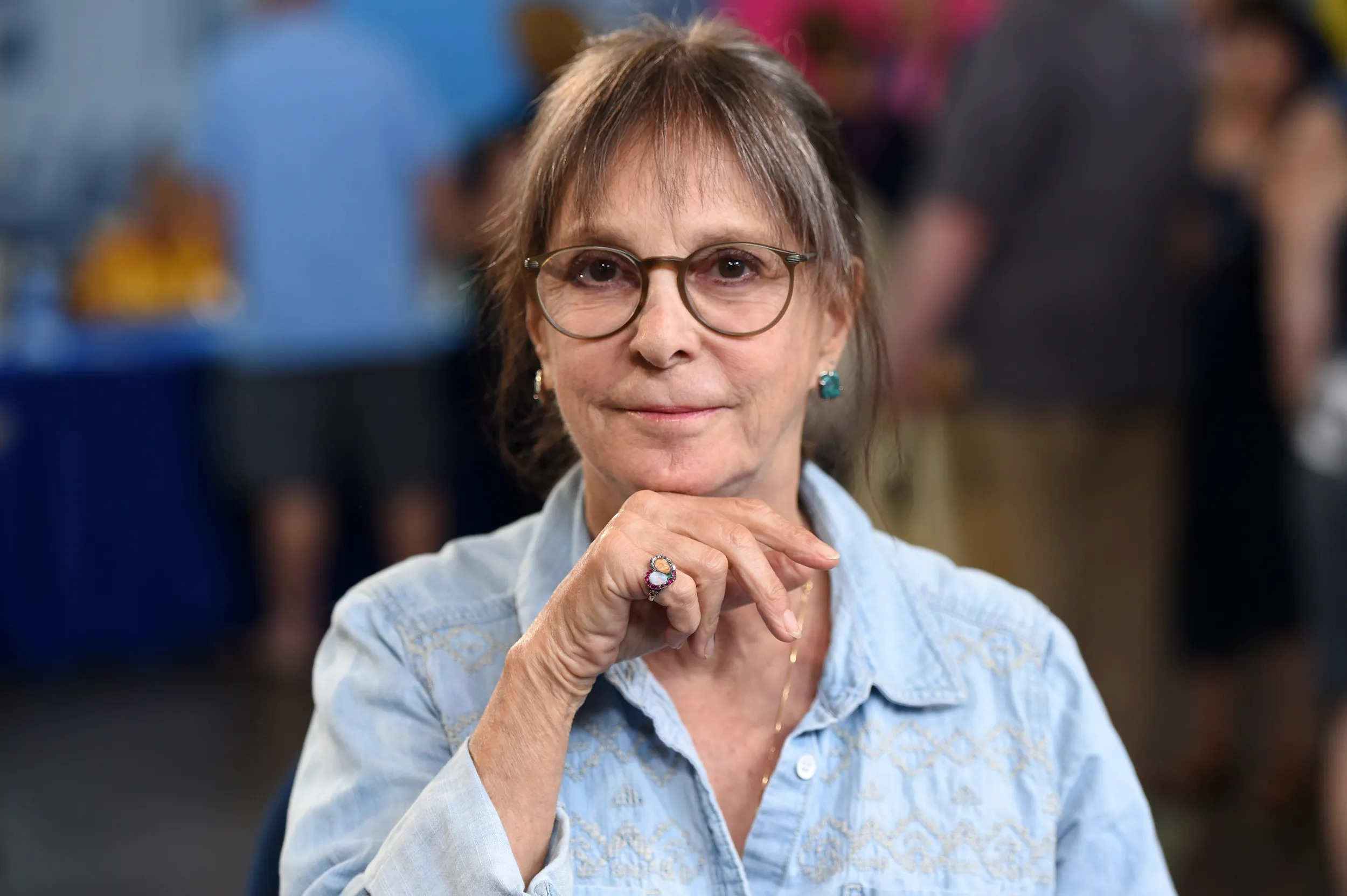
appraisal
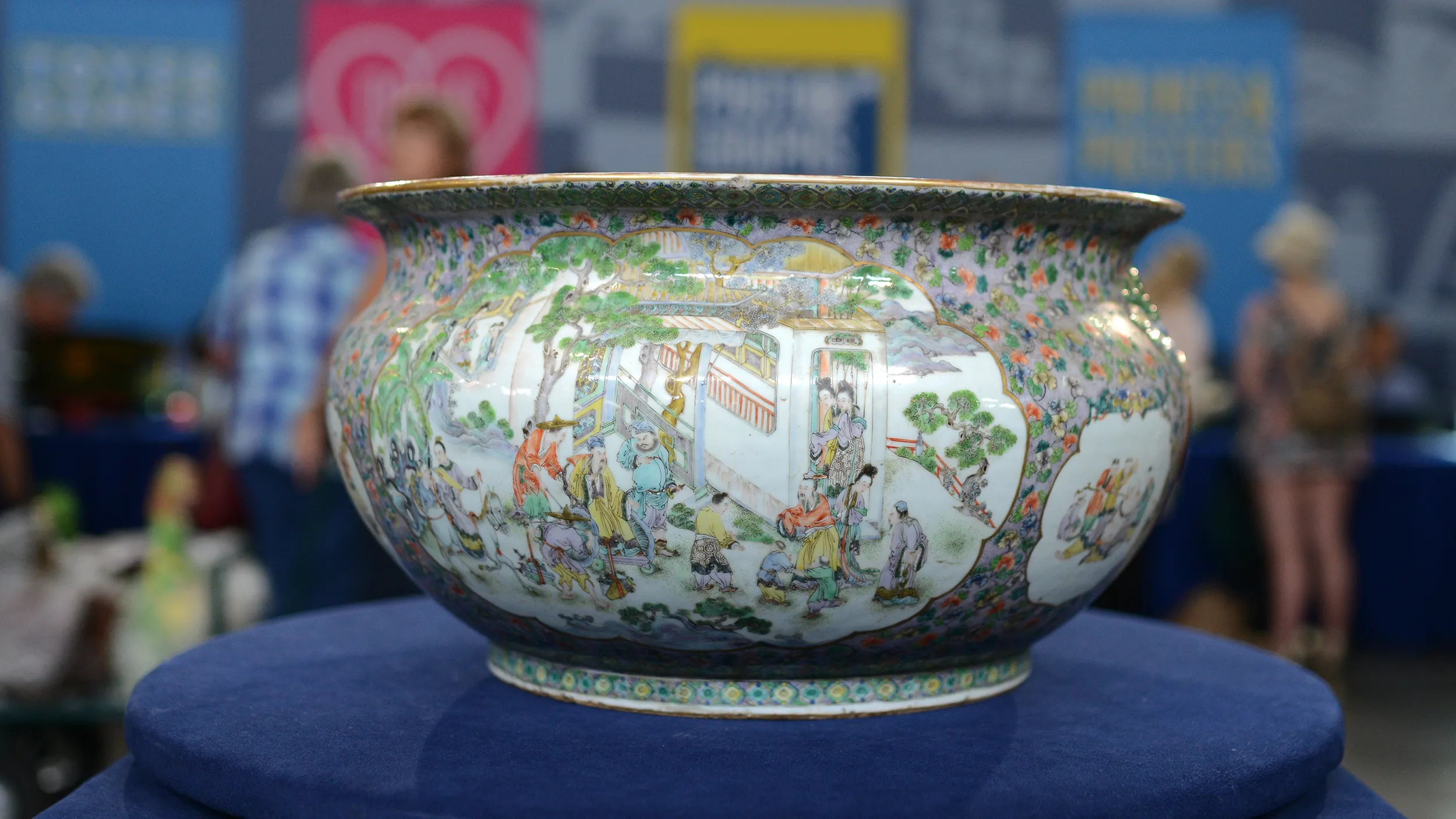
appraisal
appraisal
appraisal
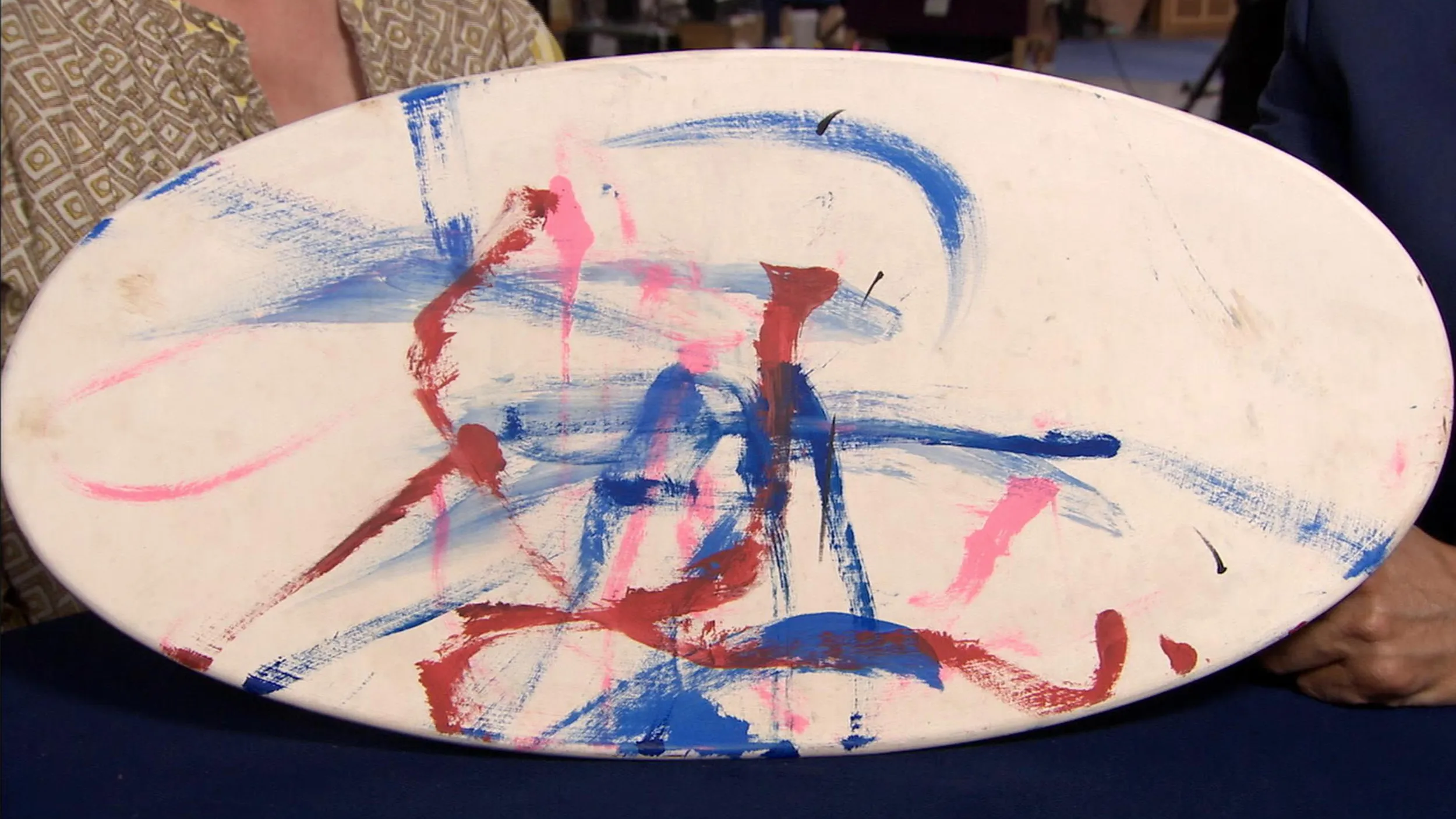
appraisal
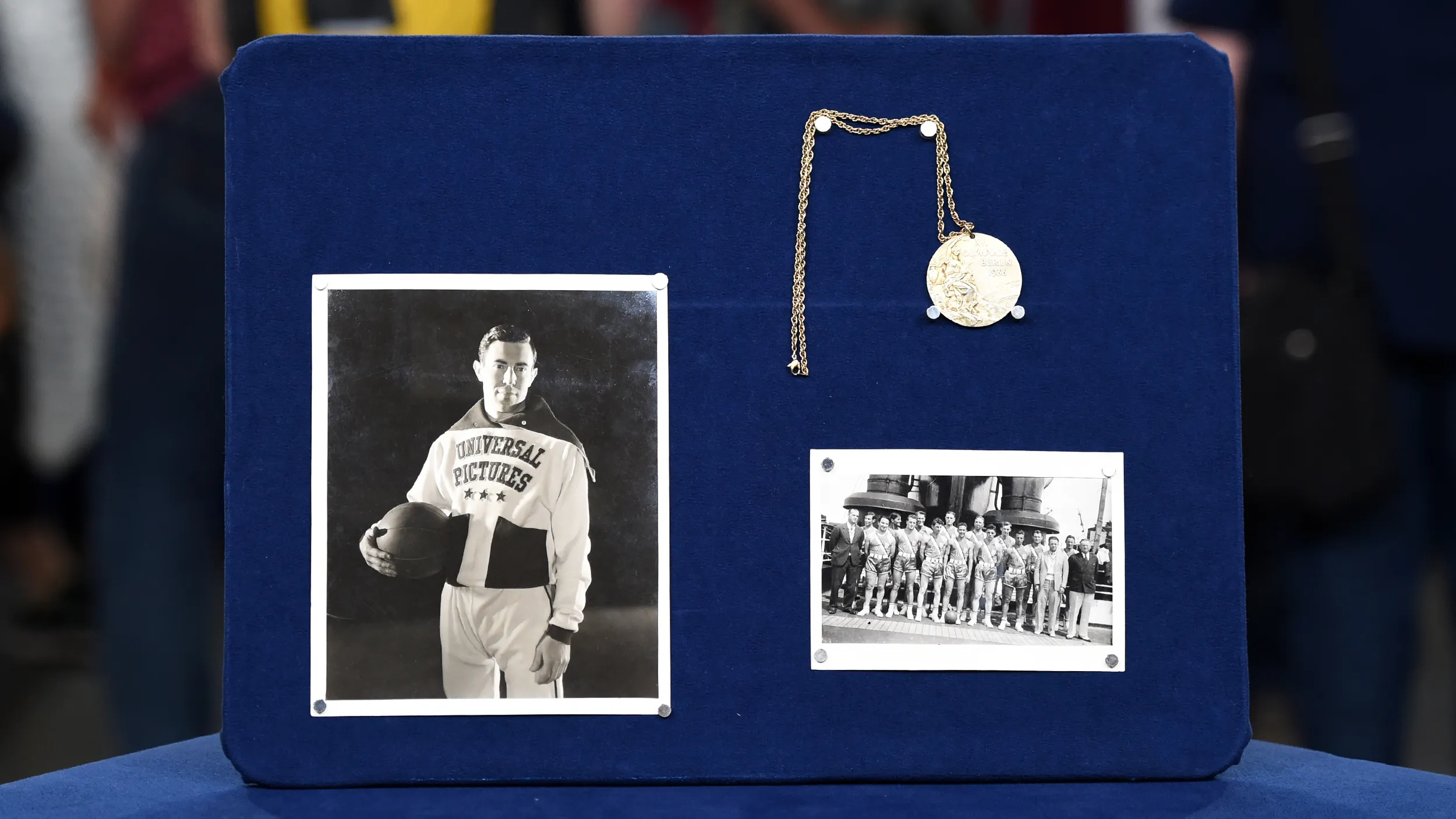
appraisal

appraisal
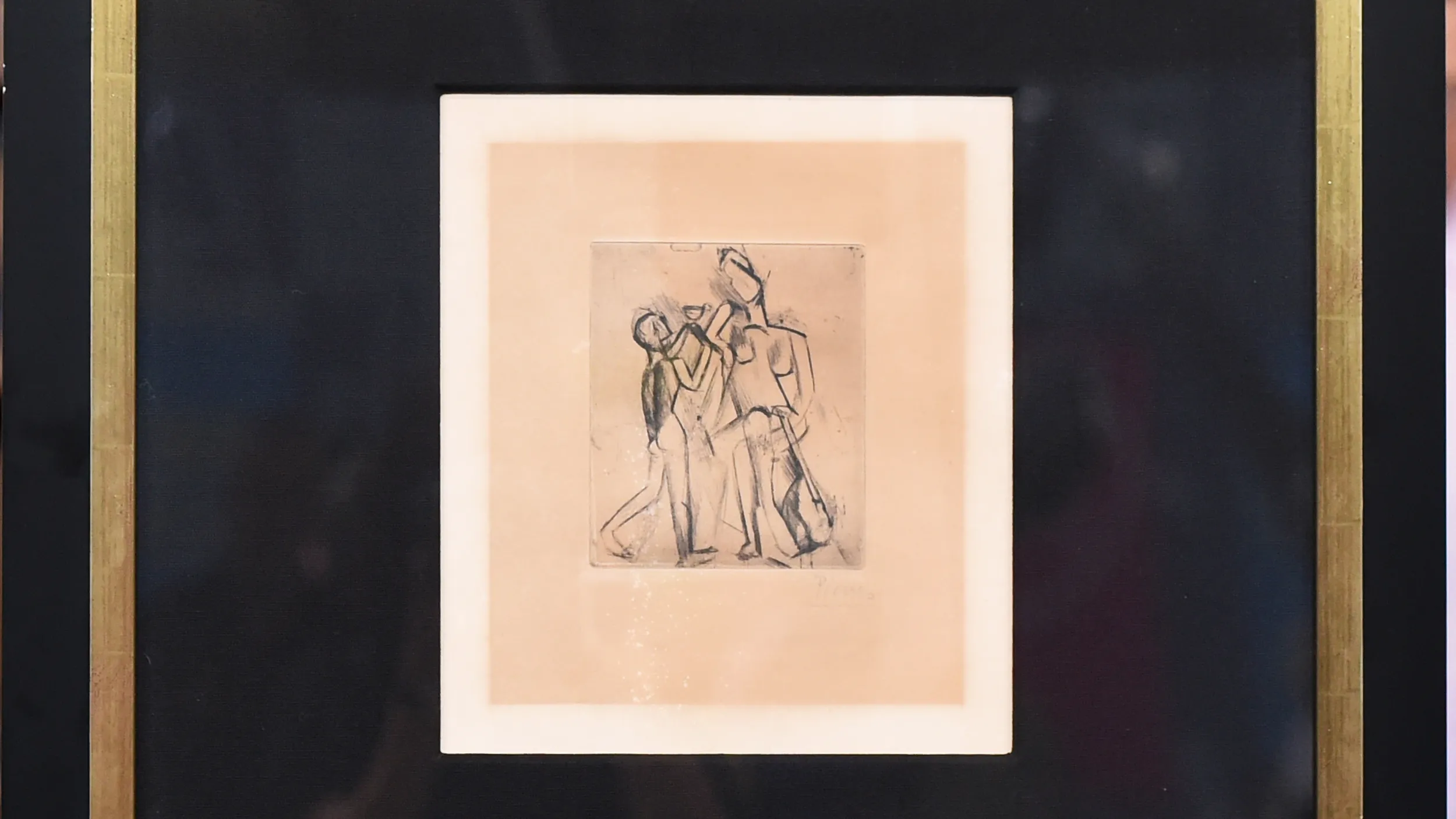
appraisal
appraisal
appraisal
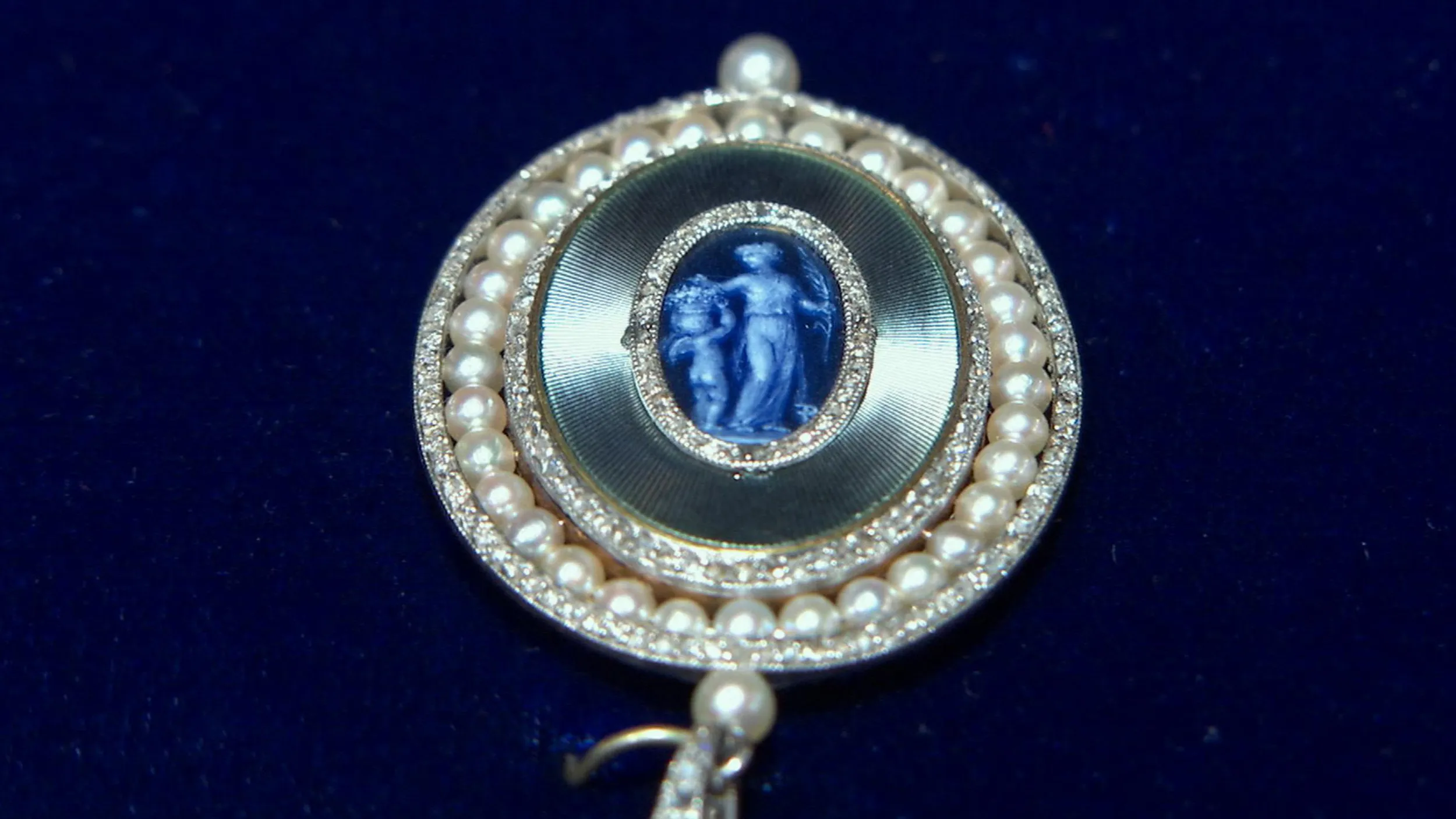
appraisal
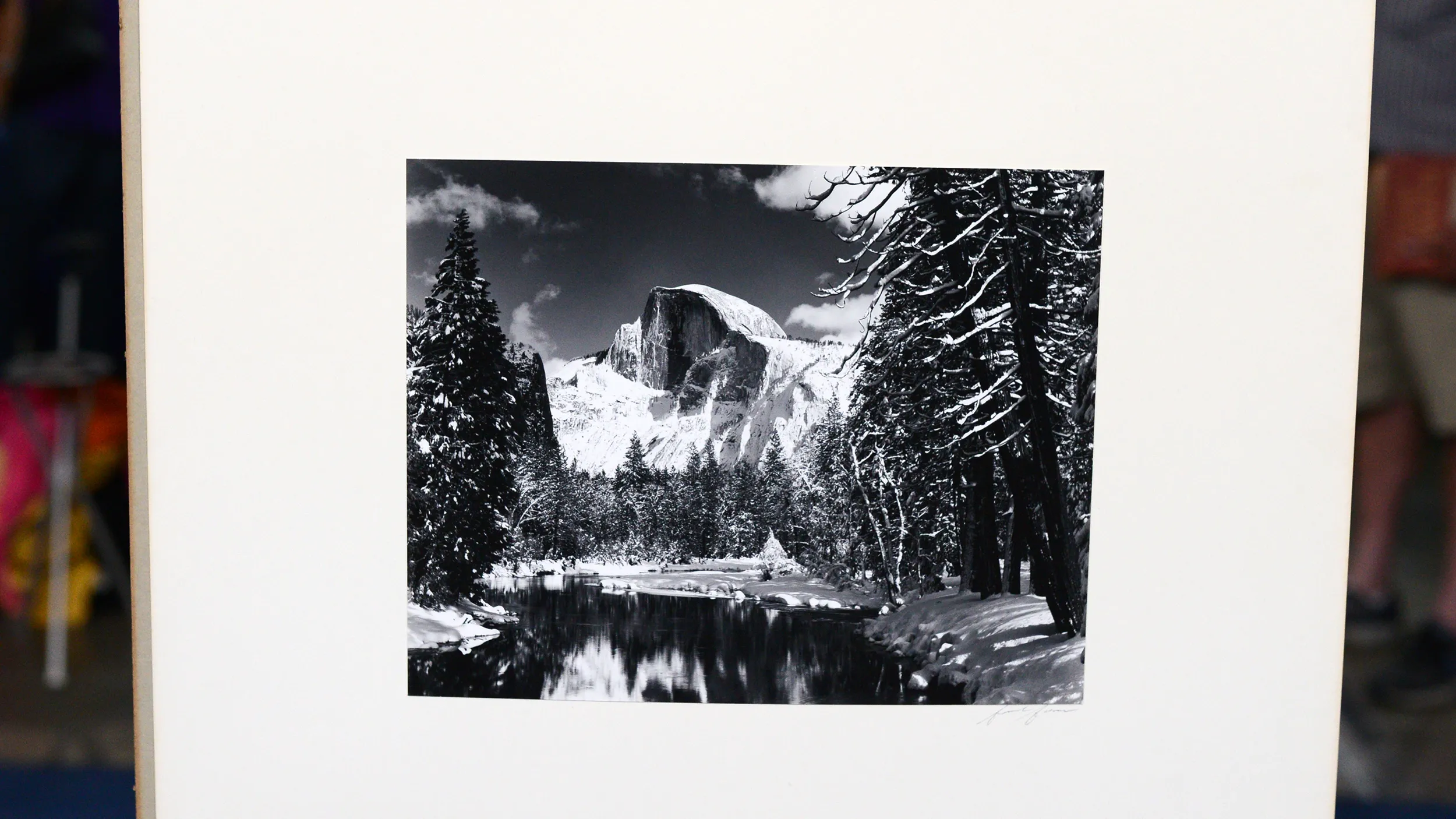
appraisal
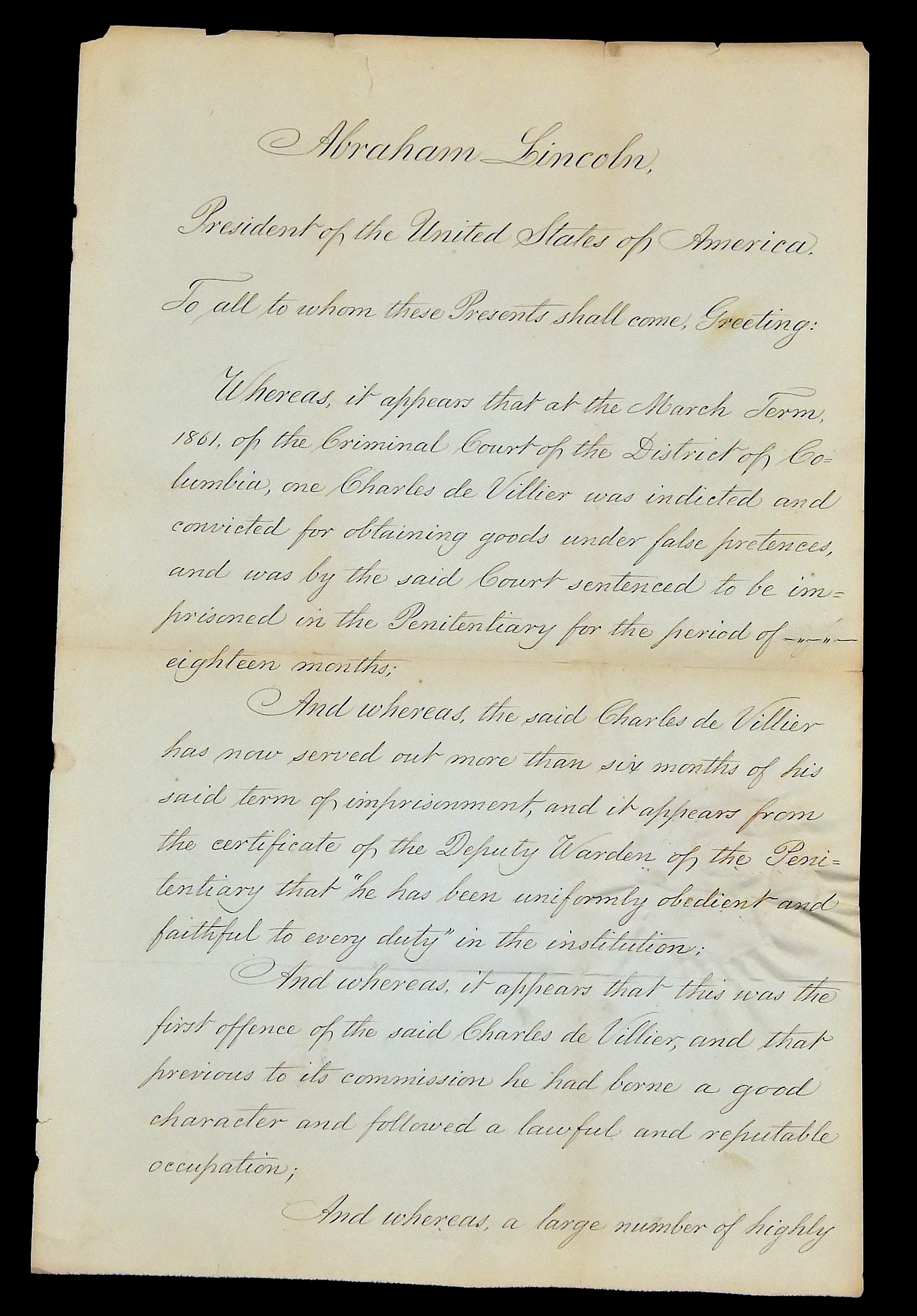
appraisal
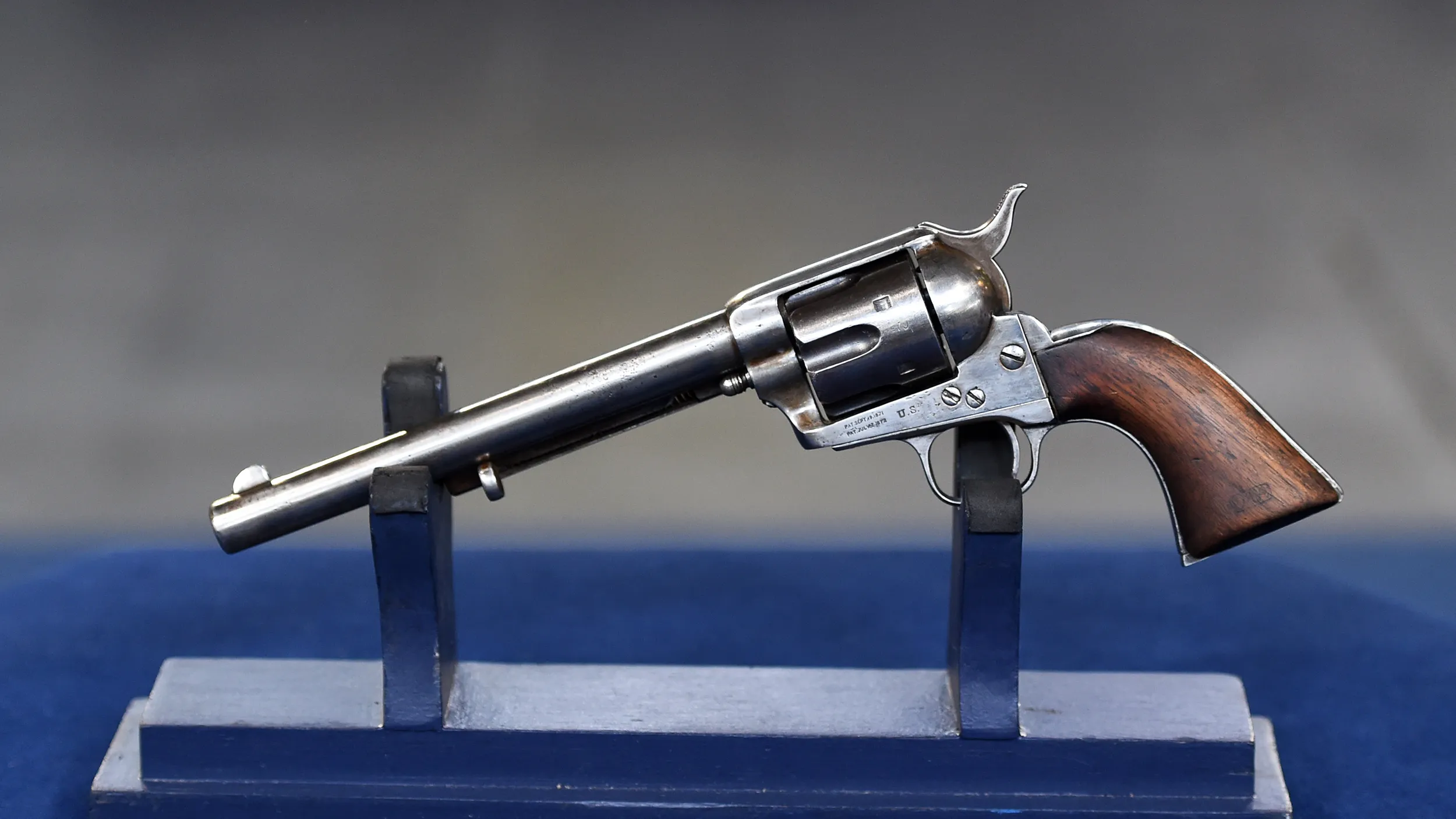
appraisal
appraisal
appraisal
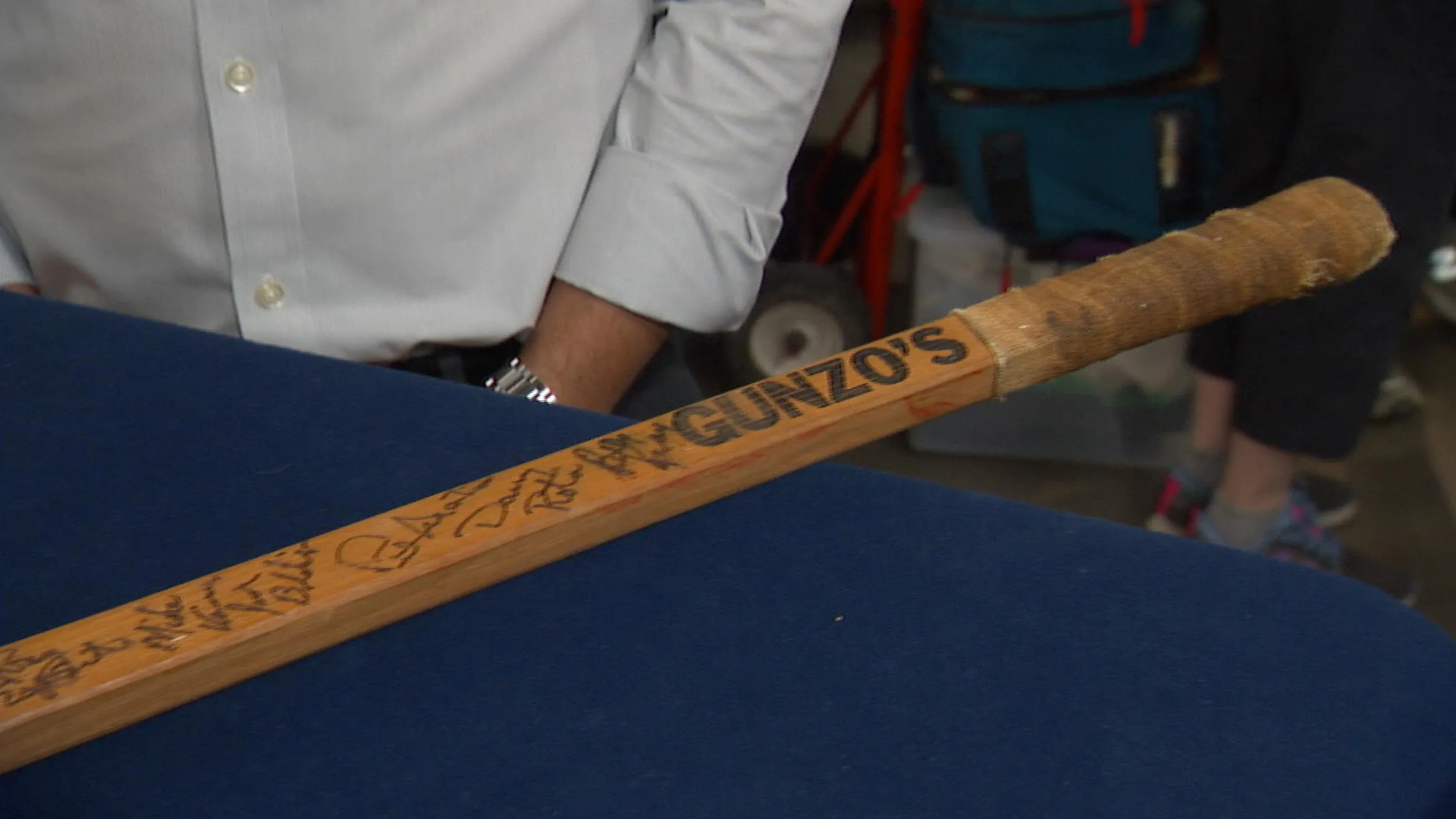
appraisal
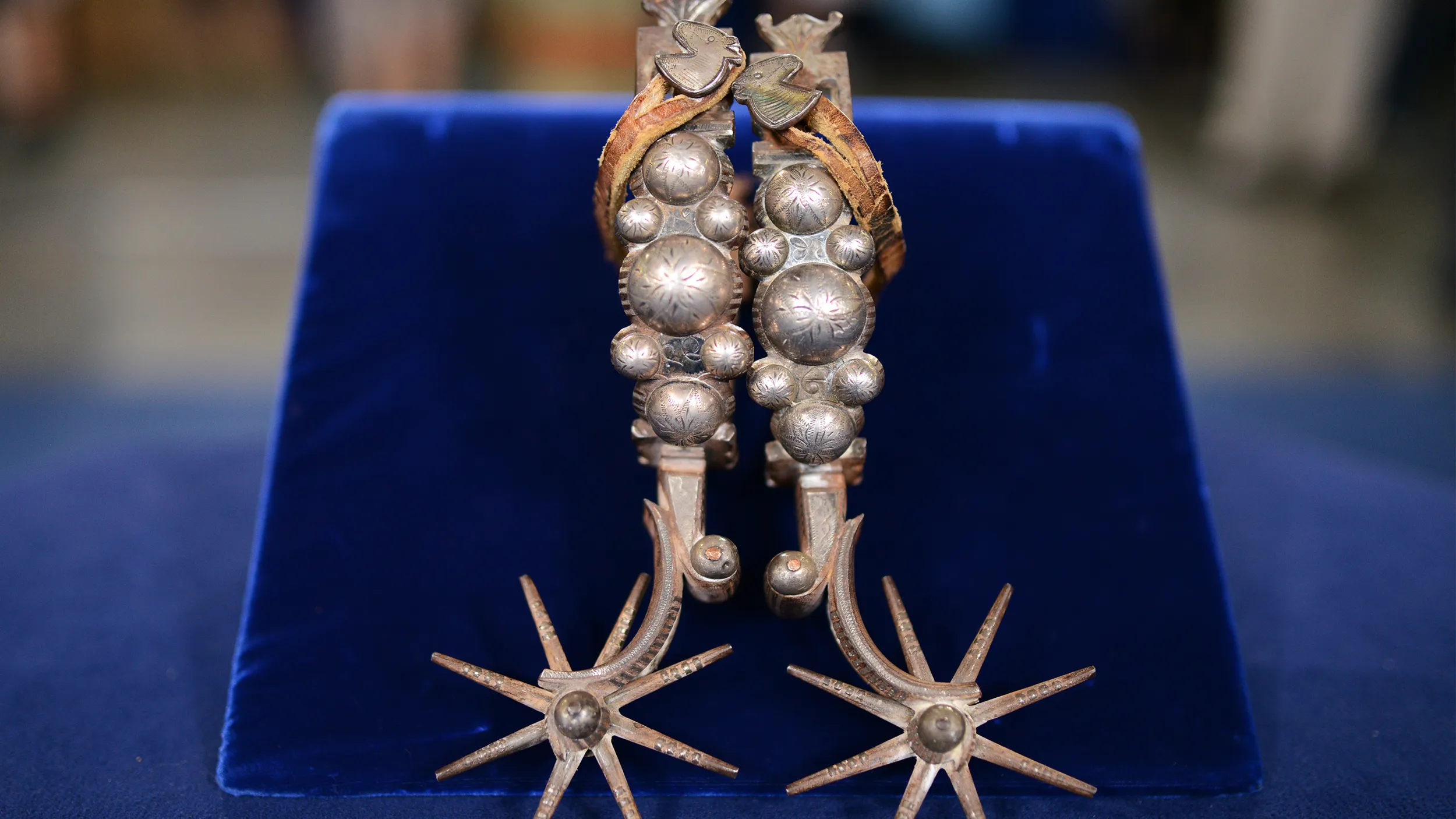
appraisal
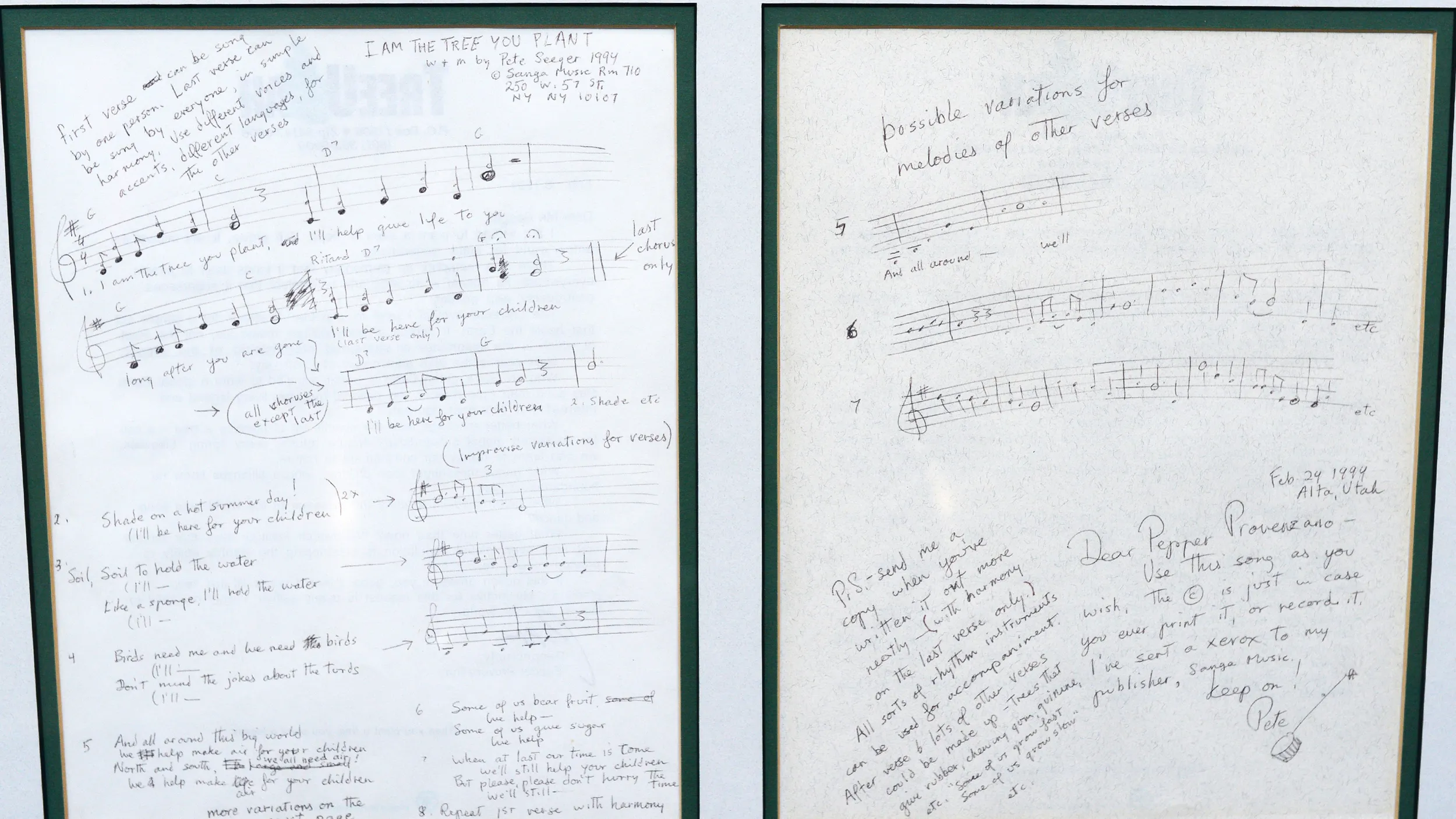
appraisal
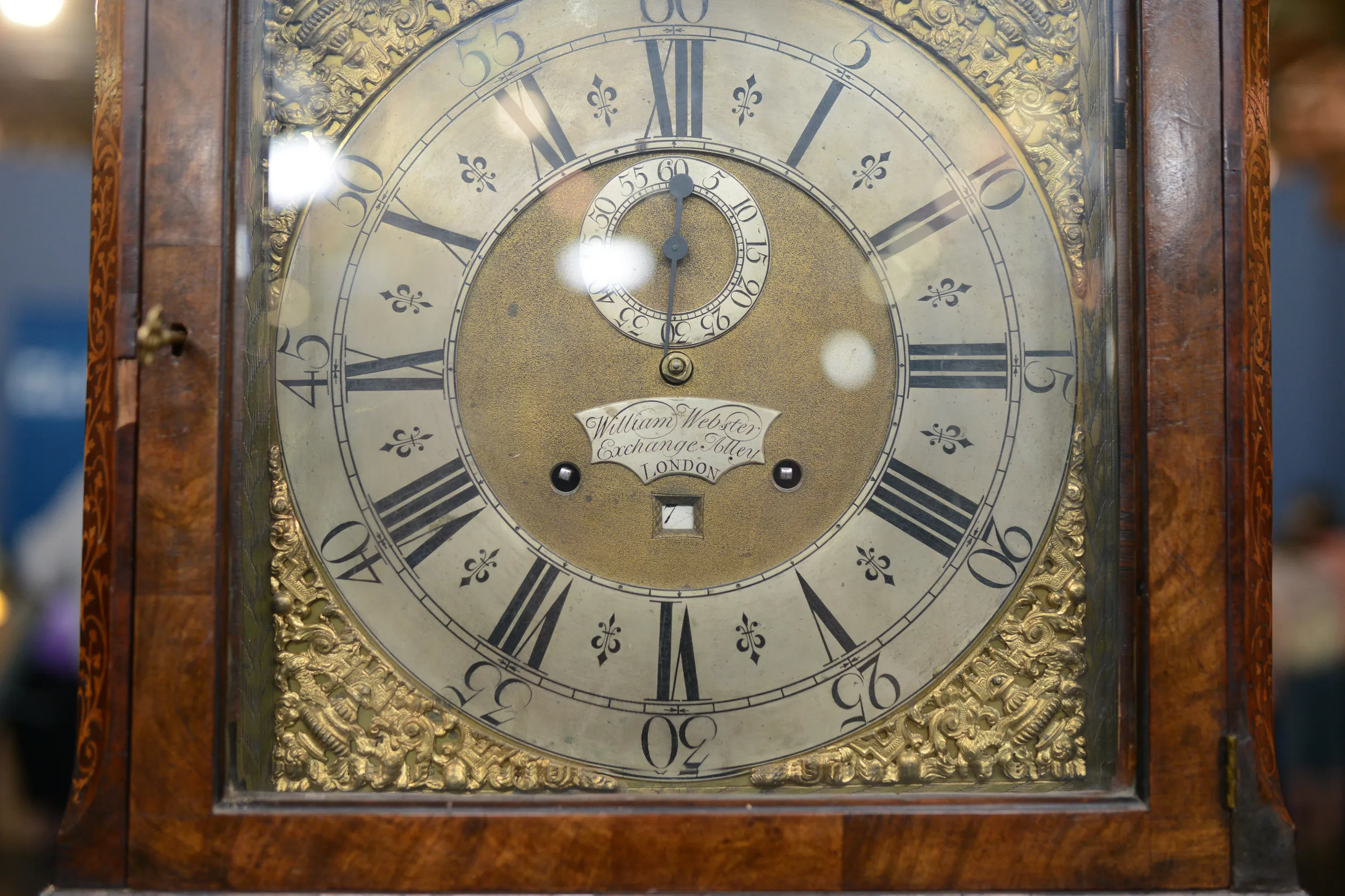
appraisal
appraisal
appraisal
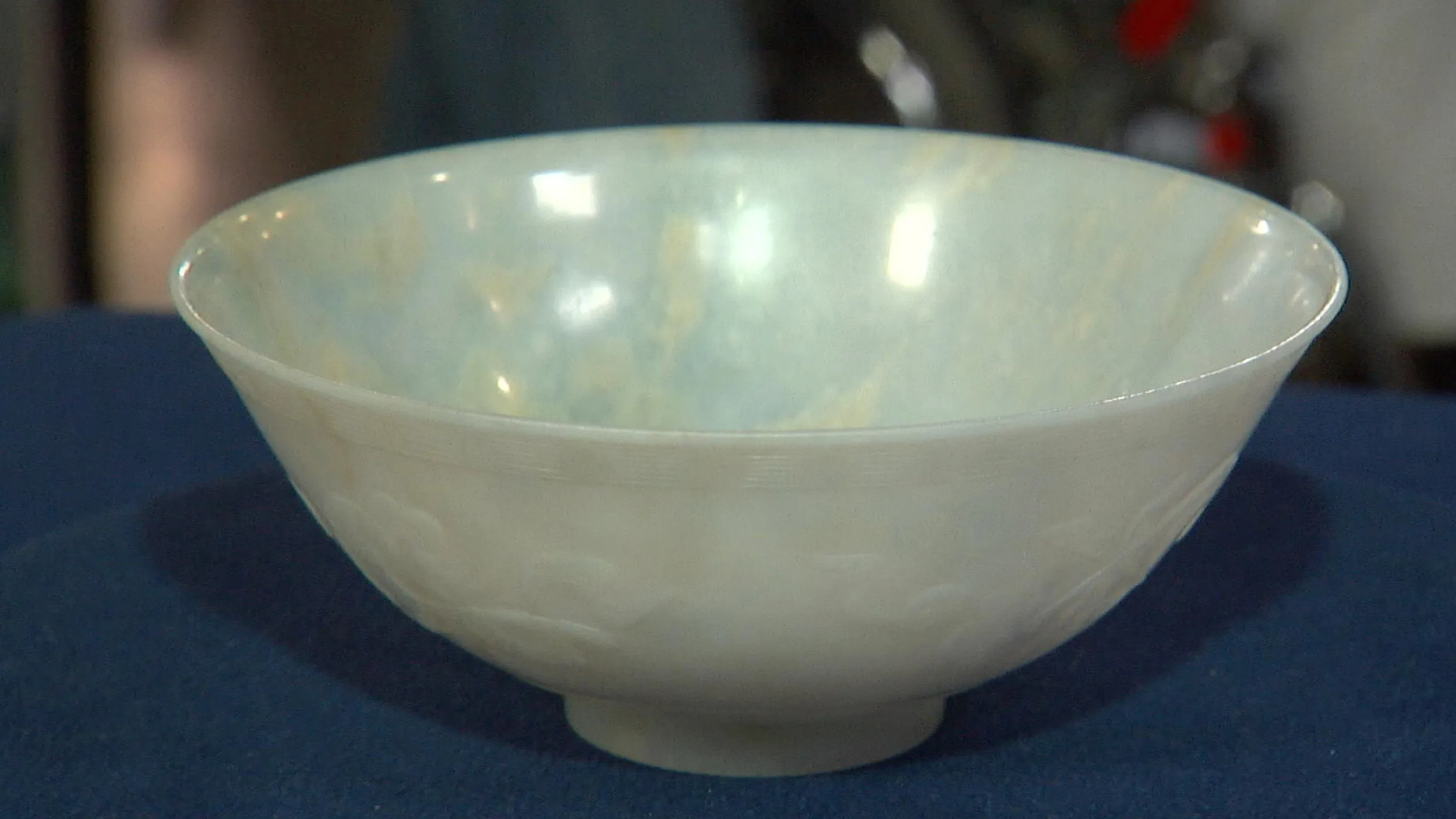
appraisal
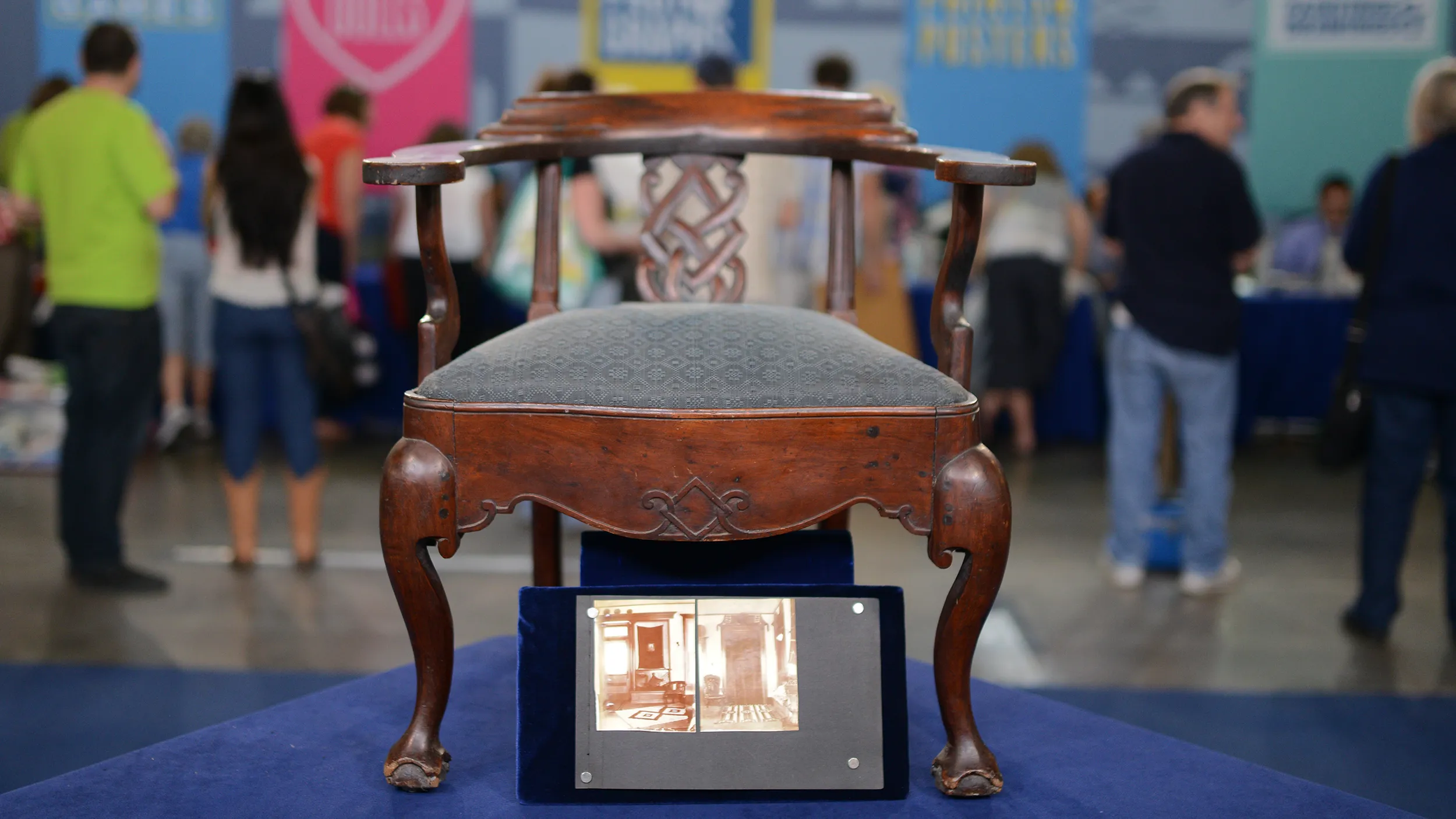
appraisal
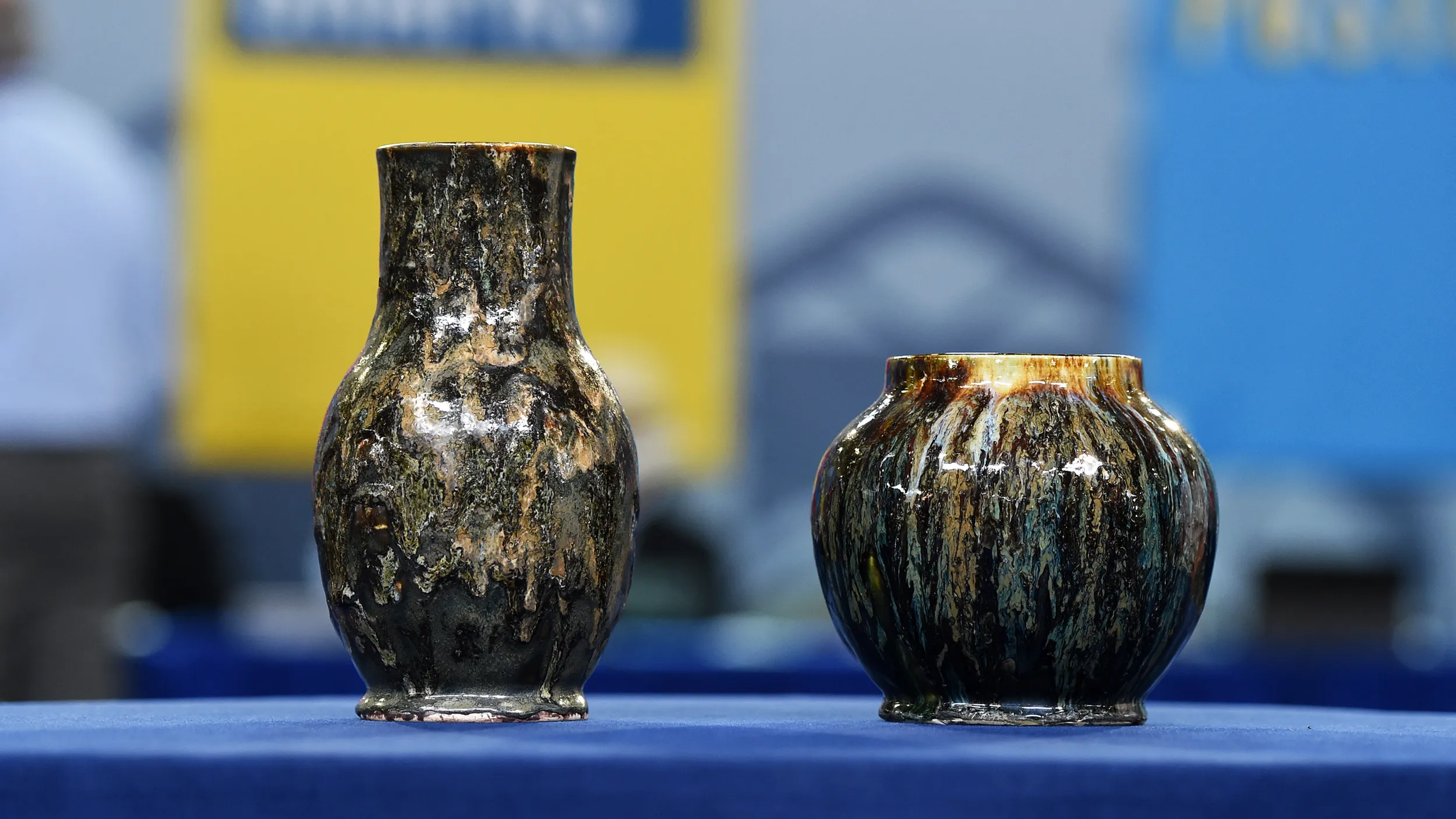
appraisal
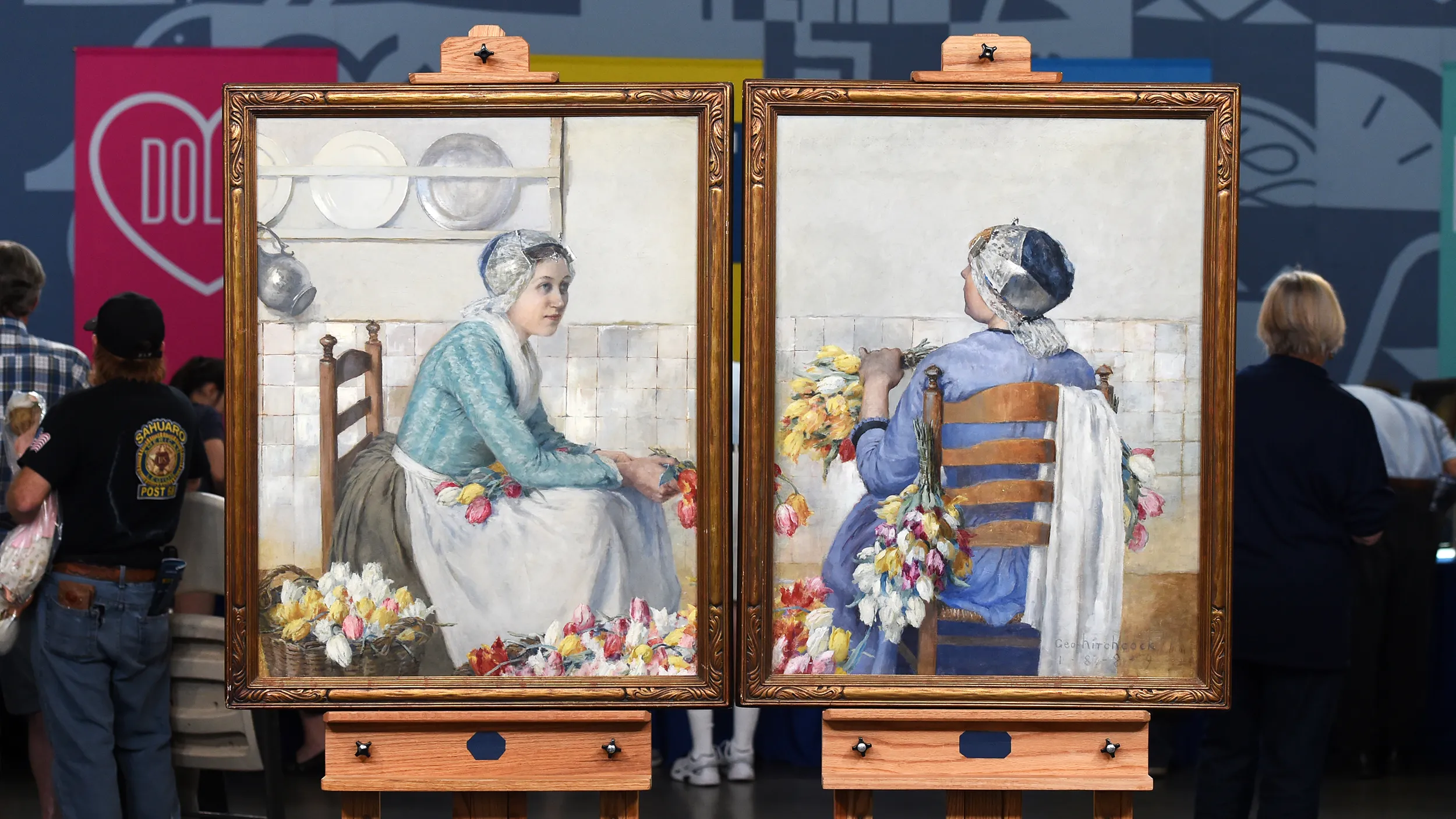
appraisal
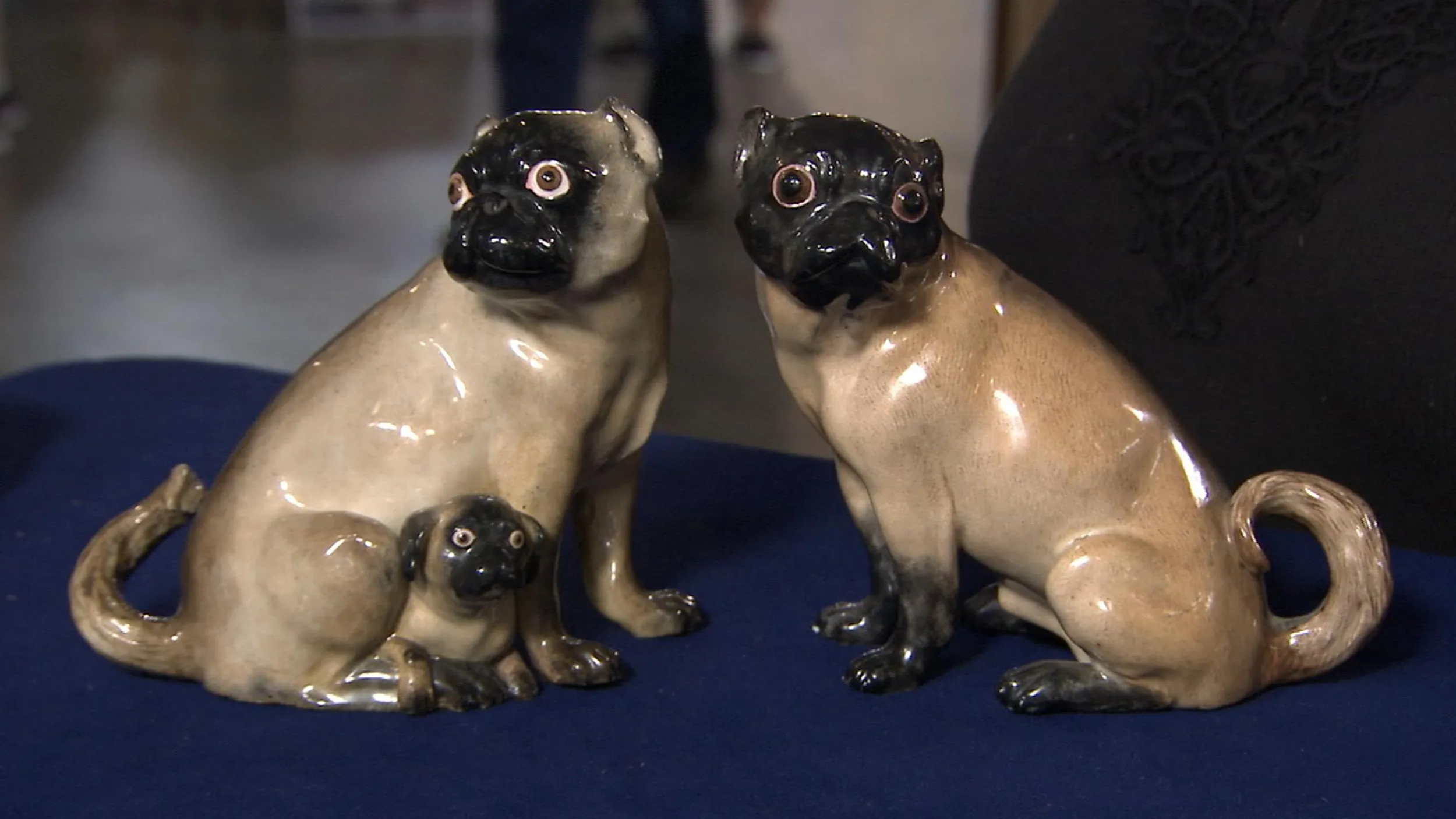
appraisal
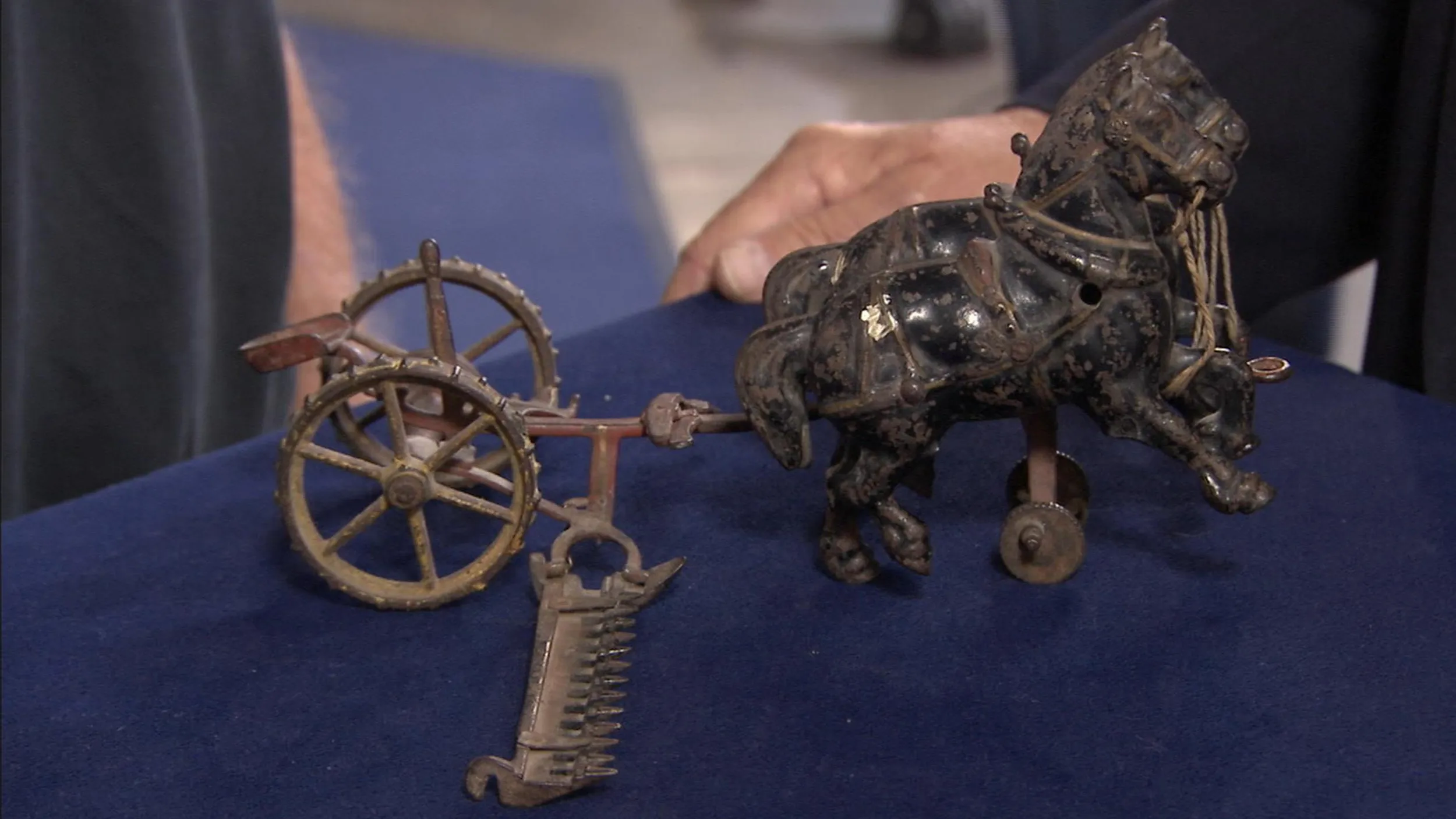
appraisal
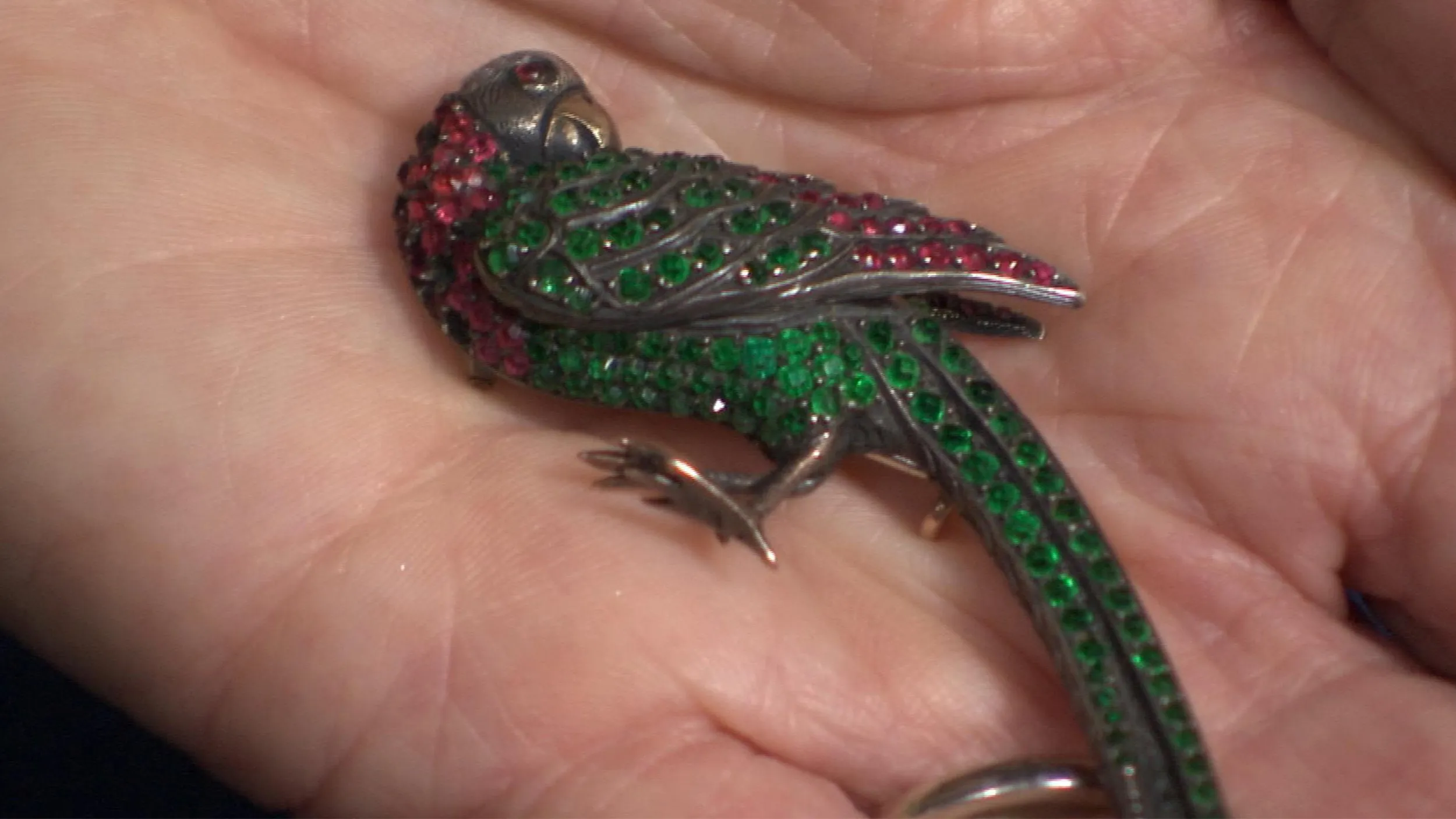
appraisal
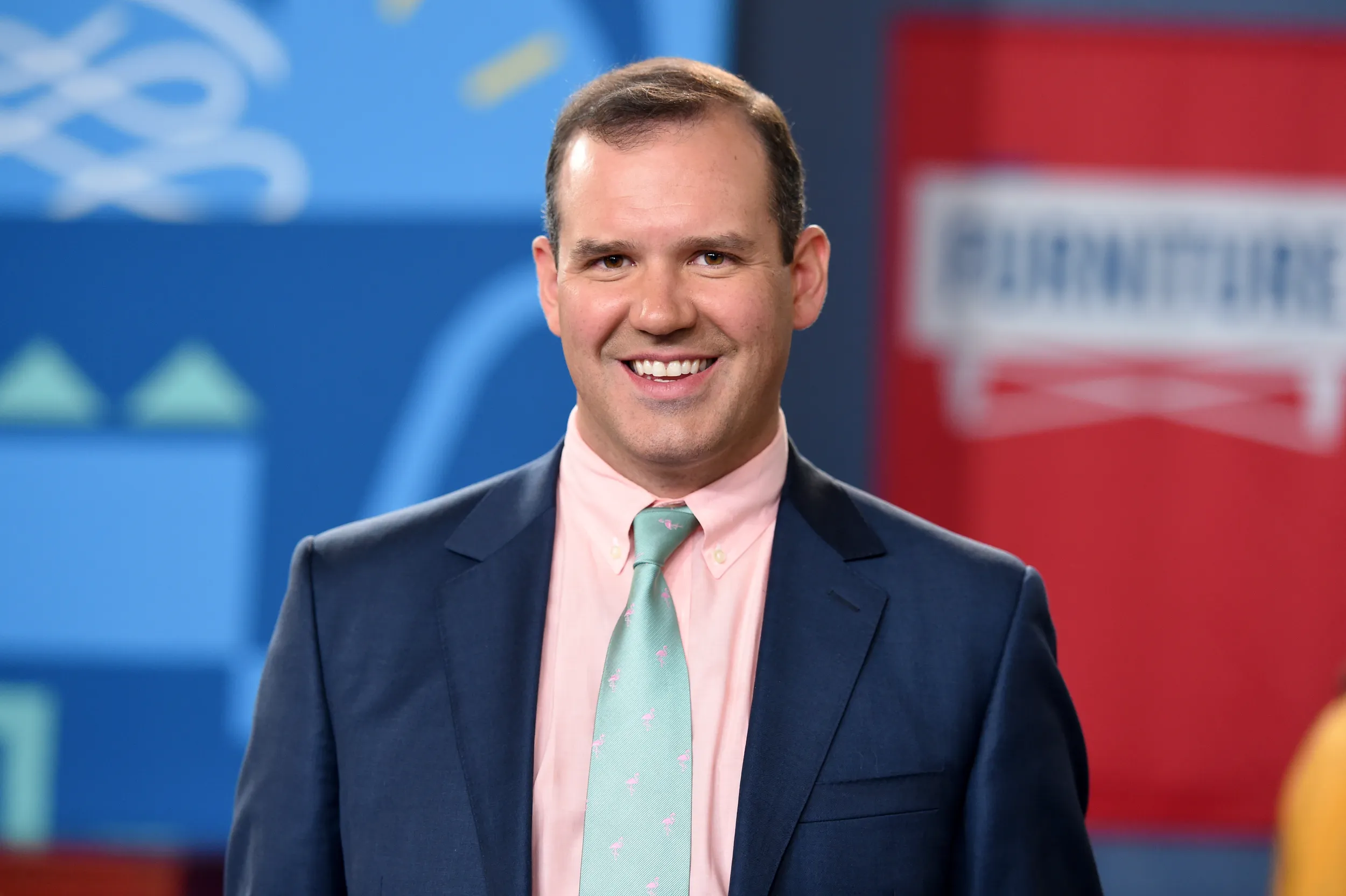

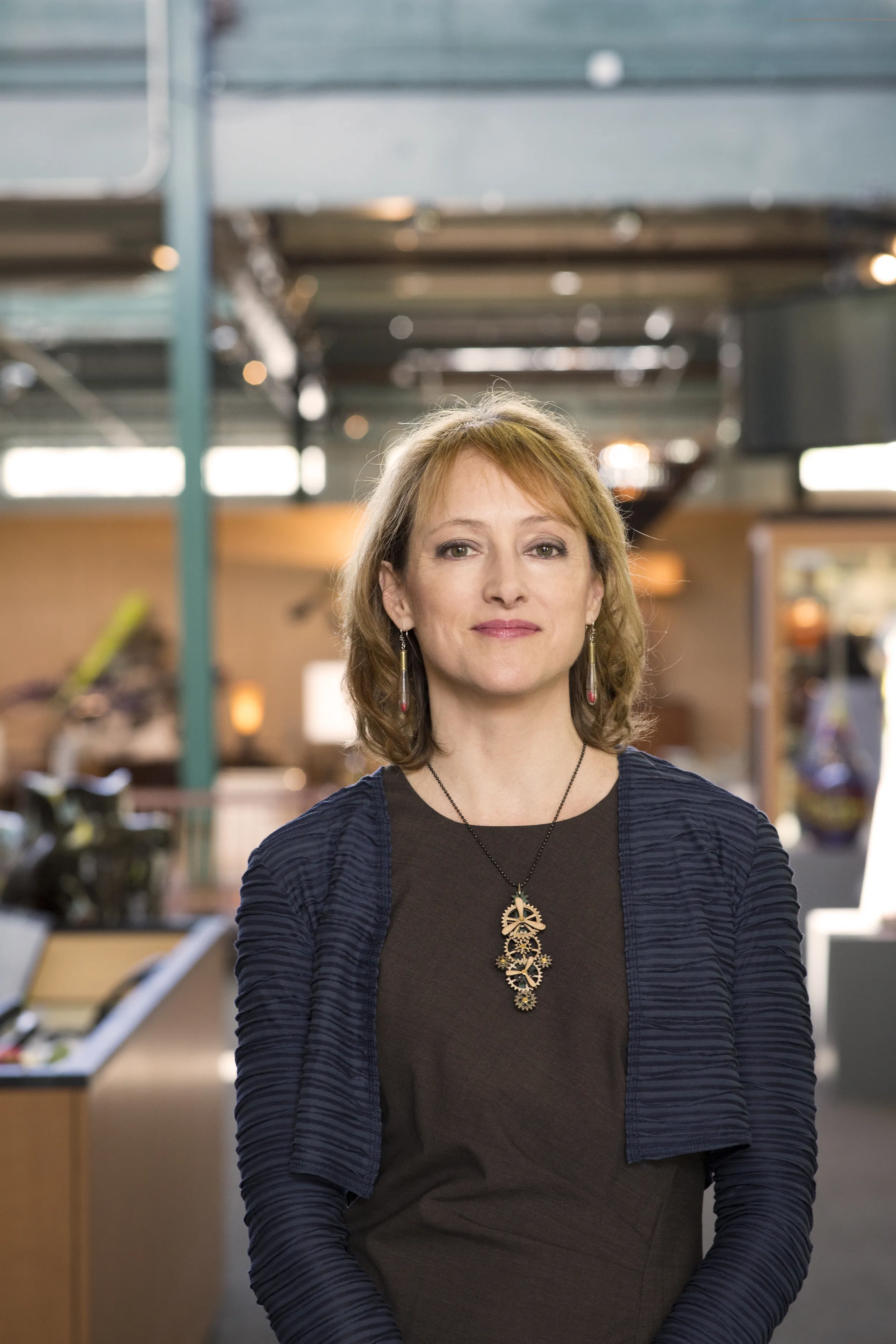
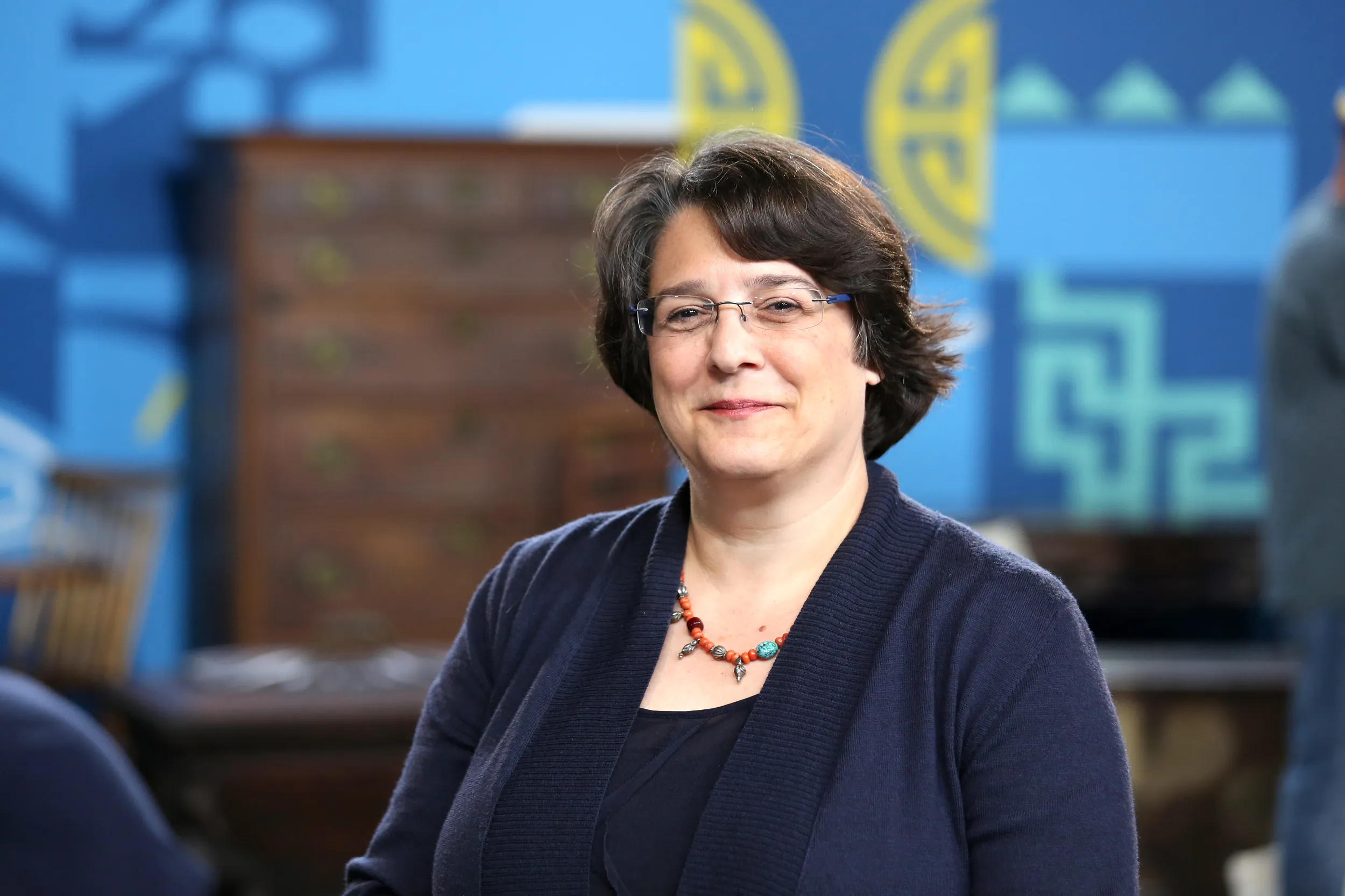
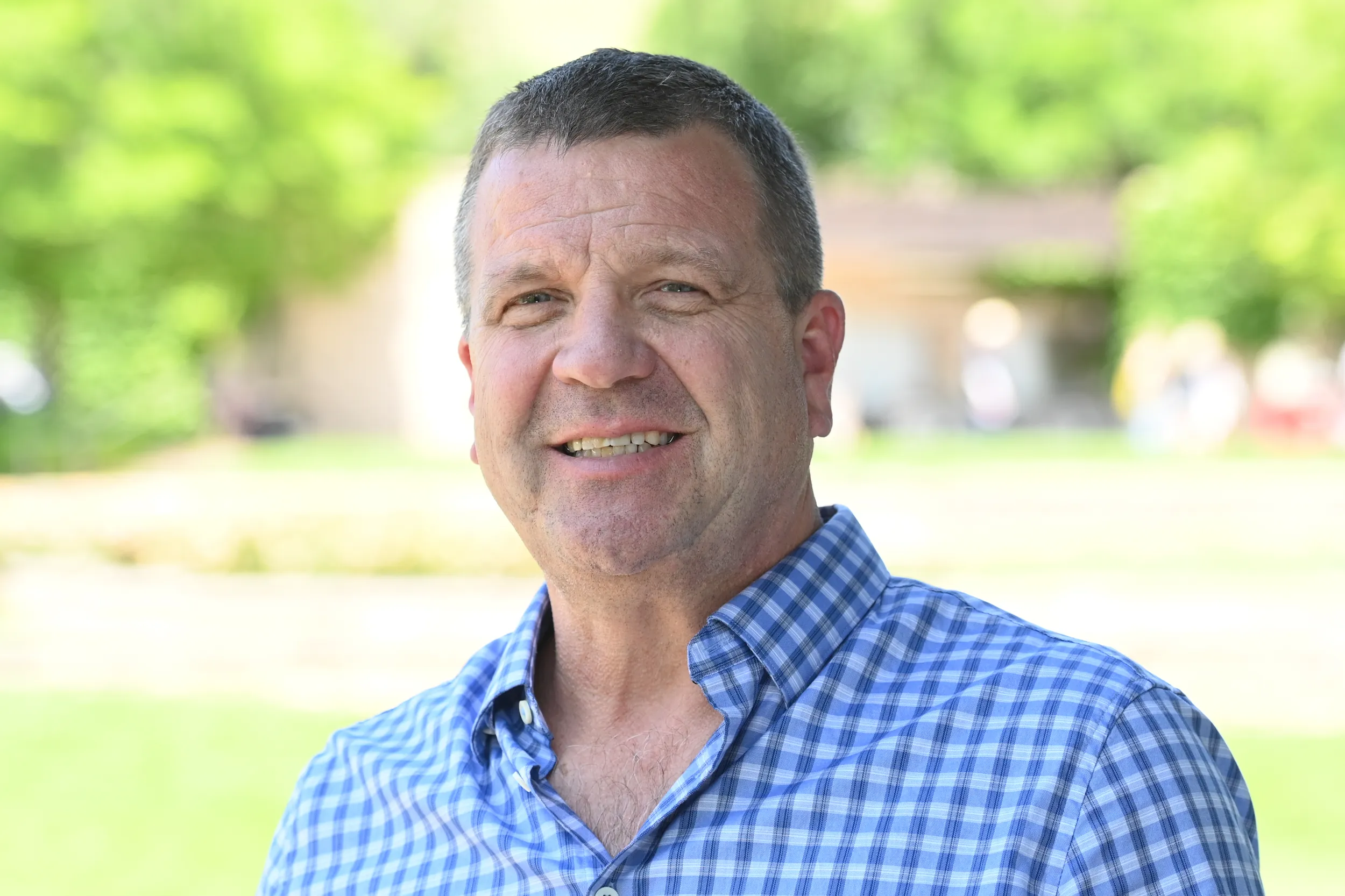




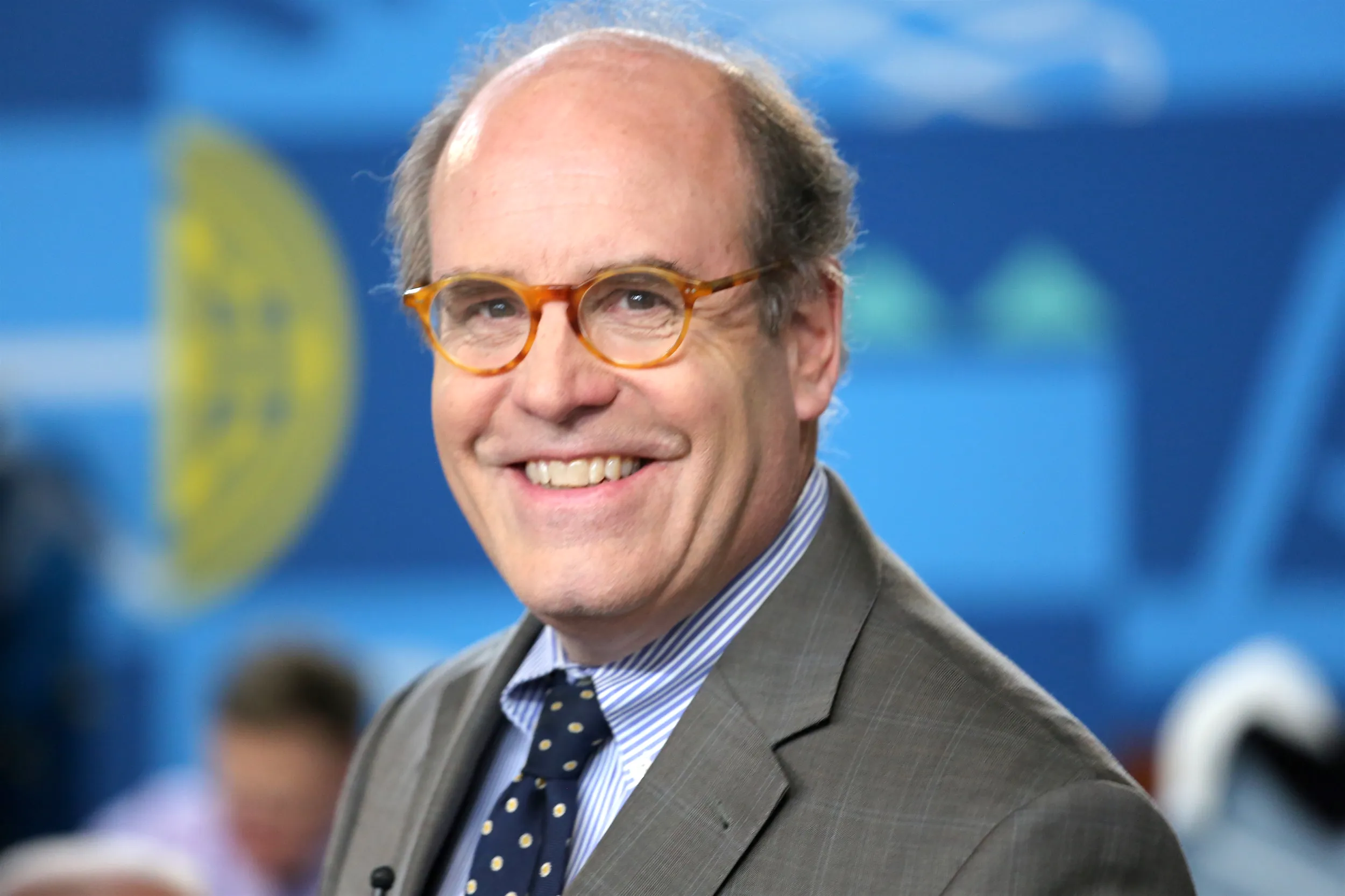






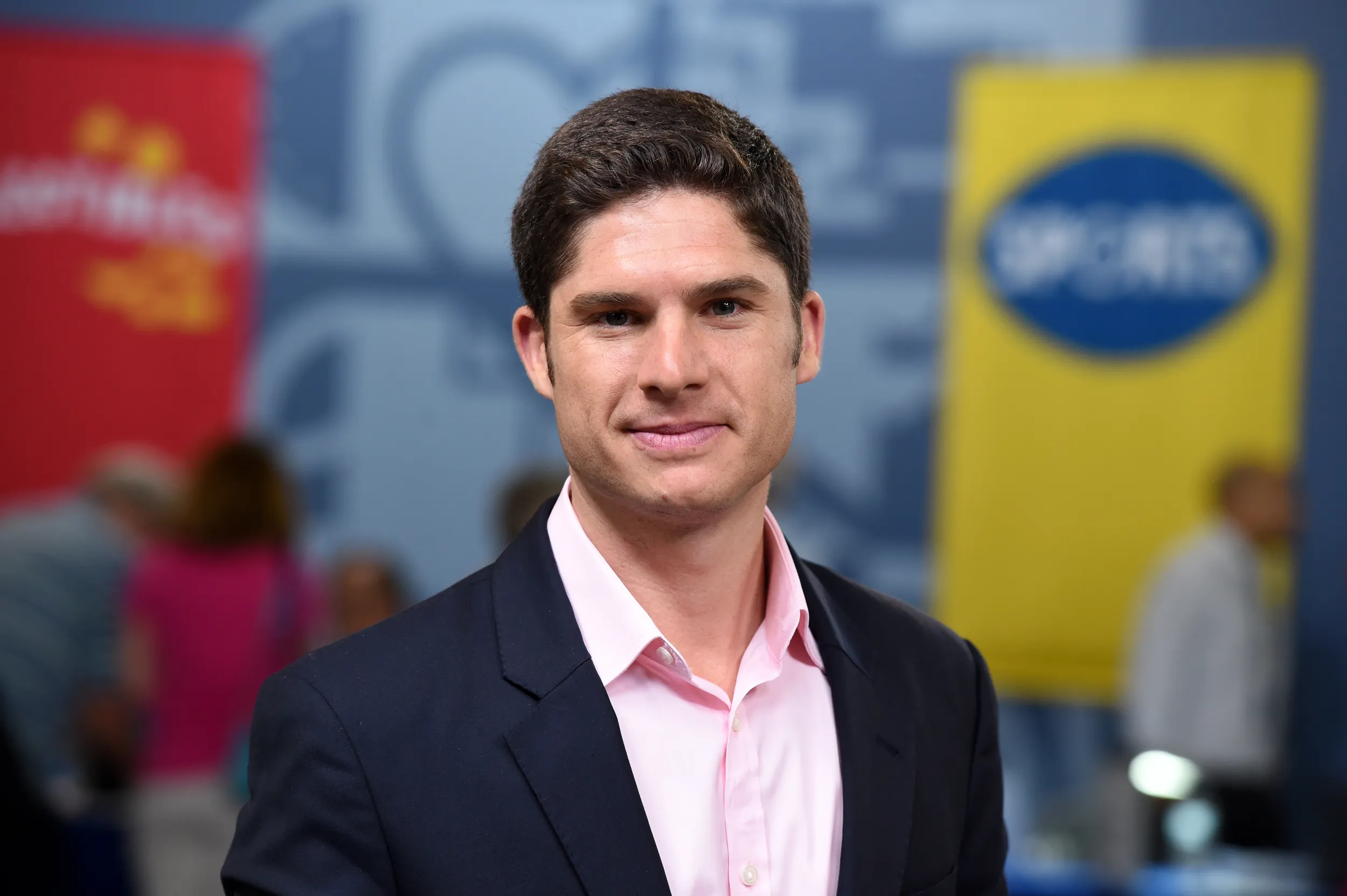
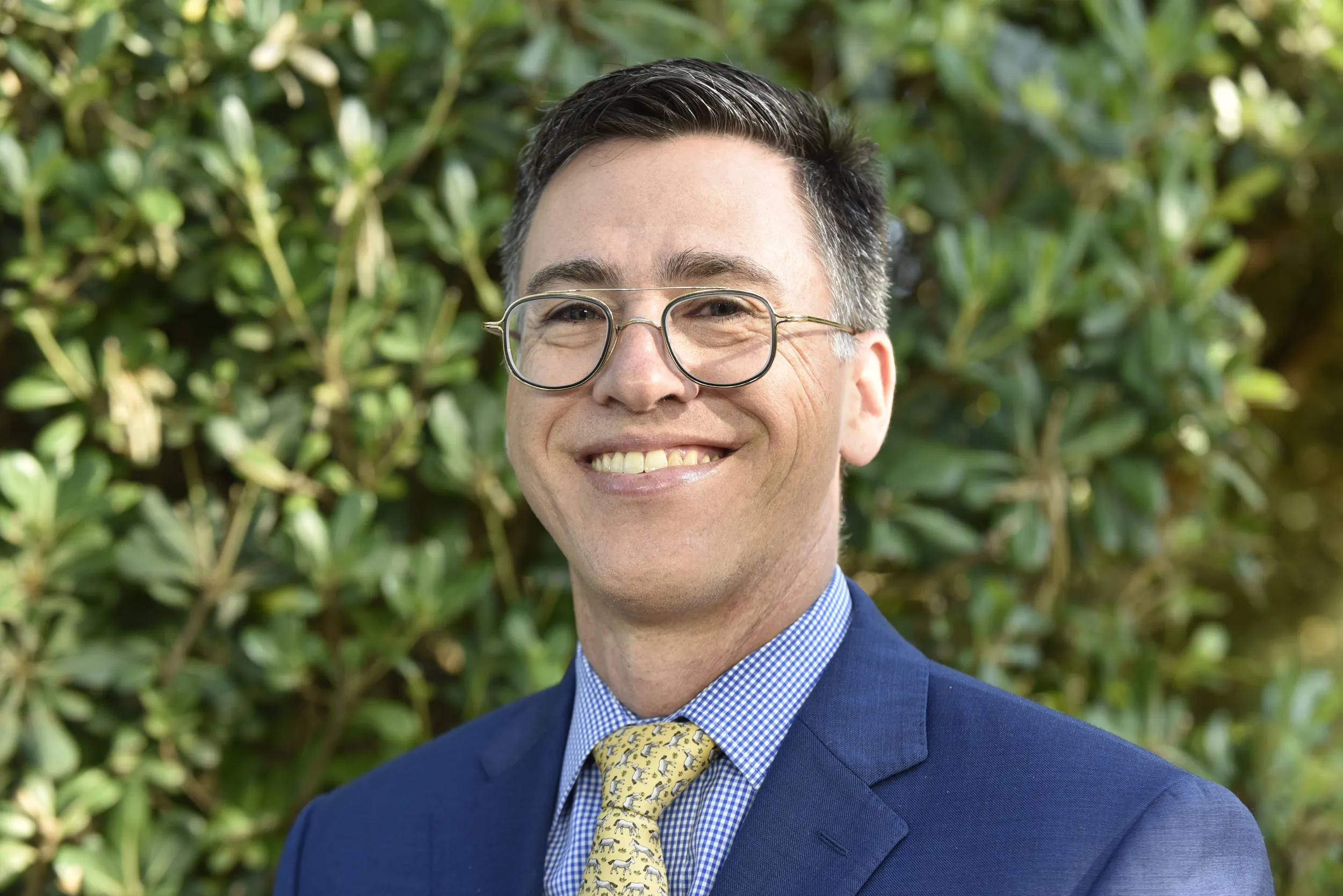

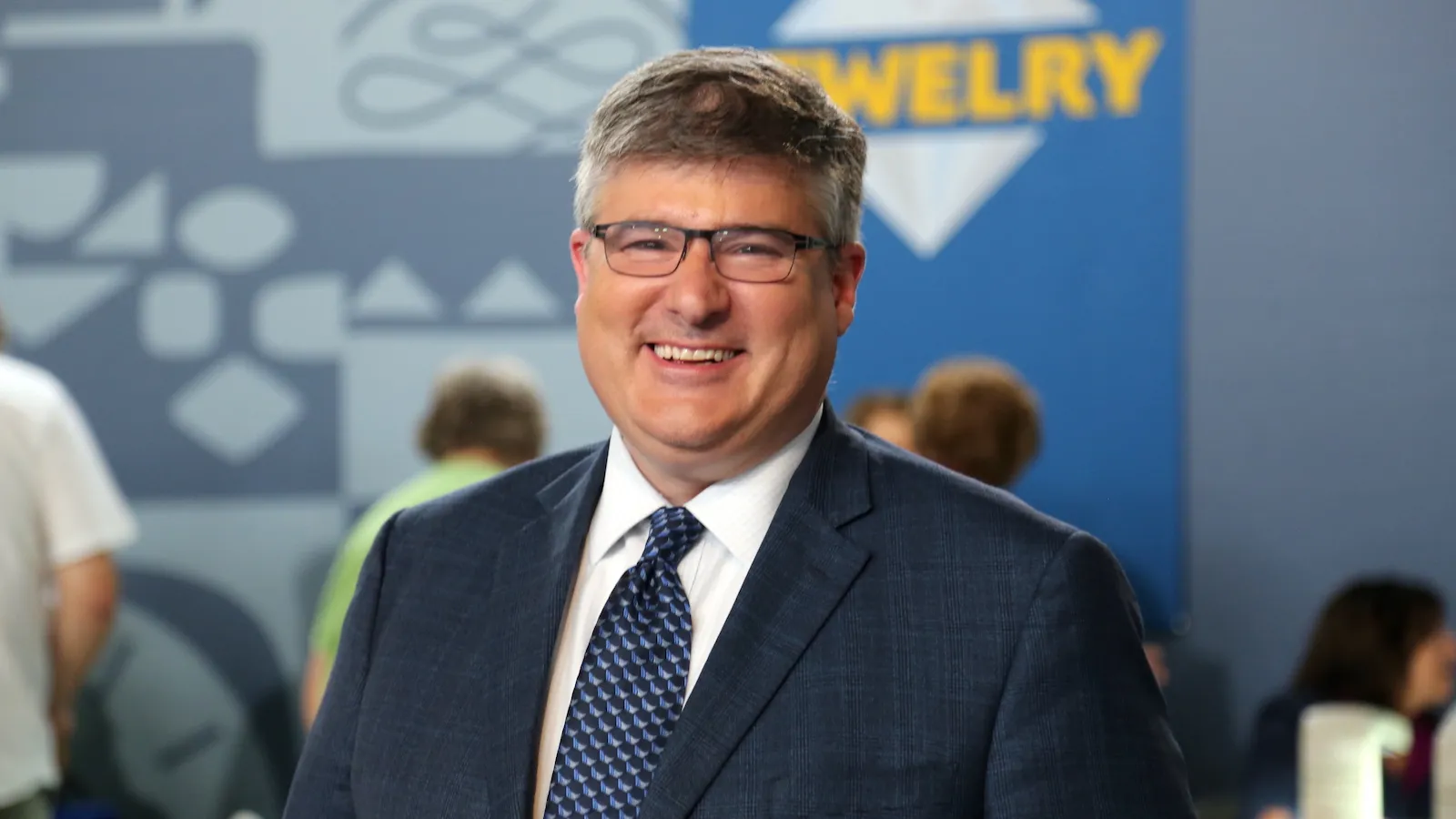

While bearing a serial number in the coveted "Custer range" can dramatically increase a firearm’s value, it by no means proves the weapon was present at Little Bighorn.
A weekly collection of previews, videos, articles, interviews, and more!
Funding for ANTIQUES ROADSHOW is provided by Ancestry and American Cruise Lines. Additional funding is provided by public television viewers.
ANTIQUES ROADSHOW is a trademark of the BBC and is produced for PBS by GBH under license from BBC, Worldwide. PBS is a 501(c)(3) not-for-profit organization.
A weekly collection of previews, videos, articles, interviews, and more!
Test your appraisal knowledge in ROADSHOW's new game — Price Range!

